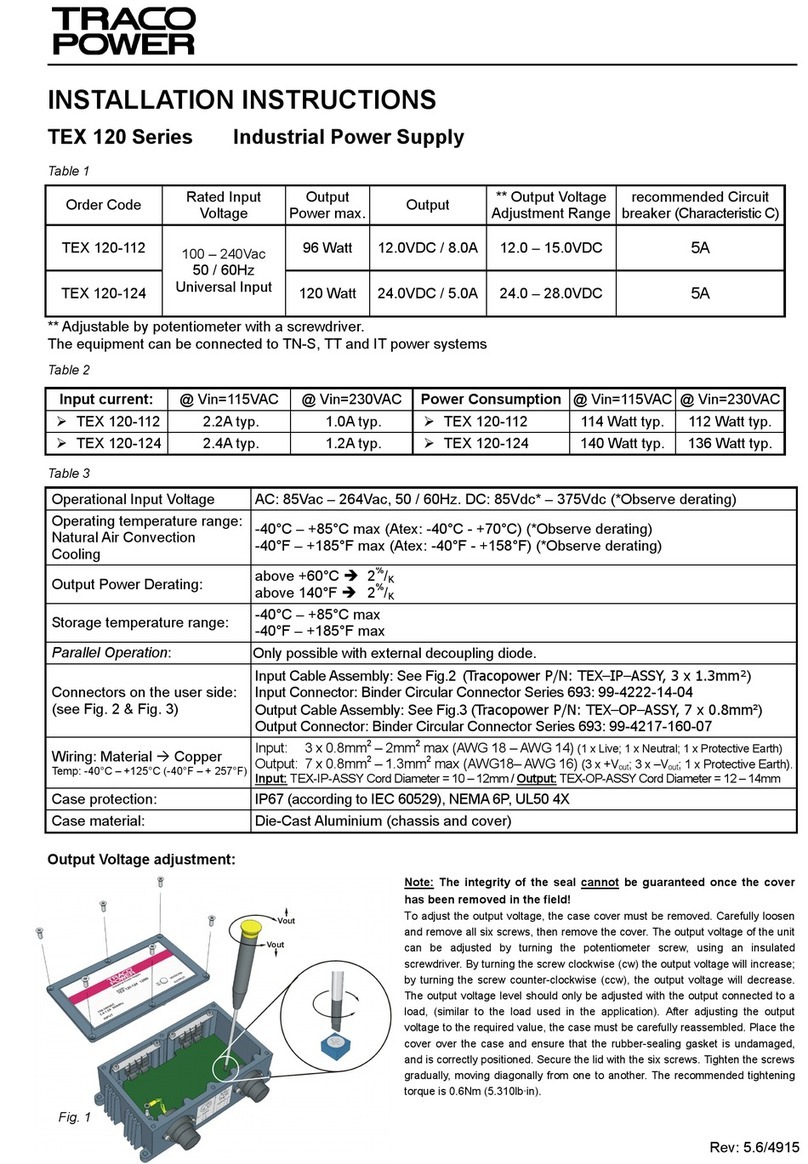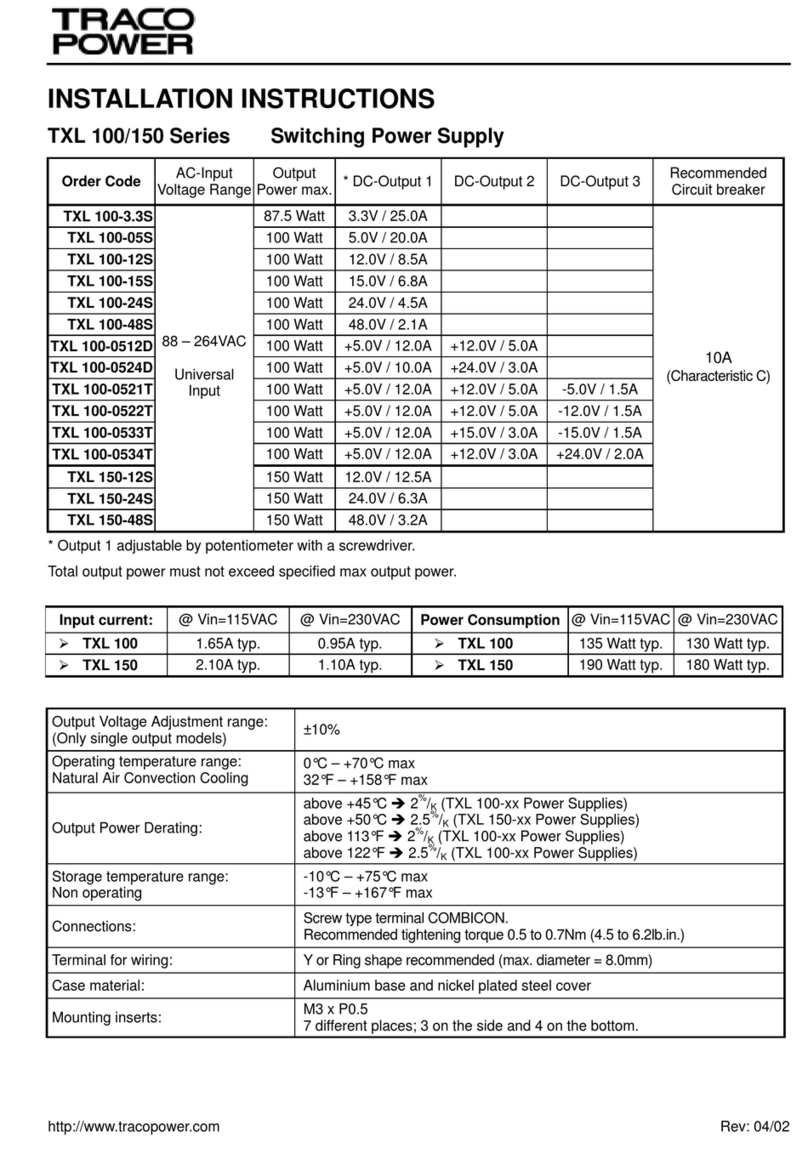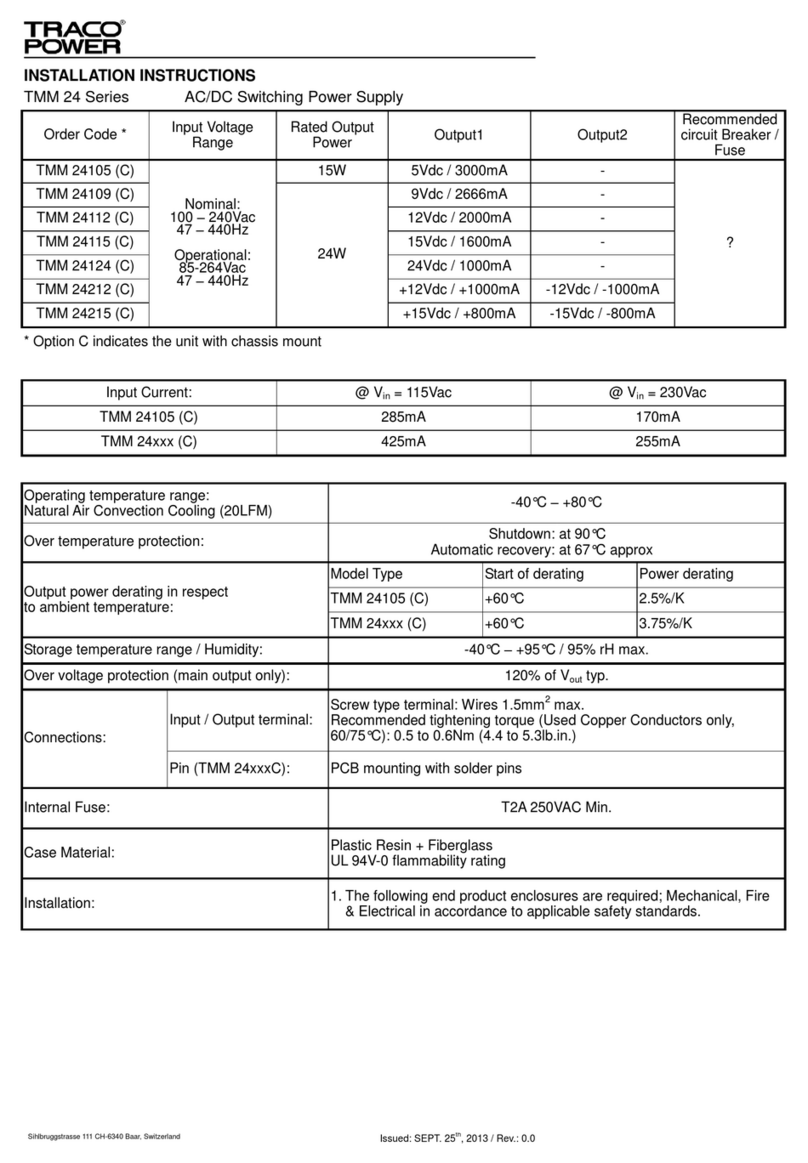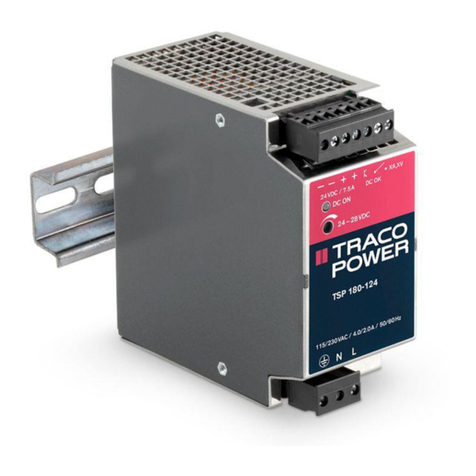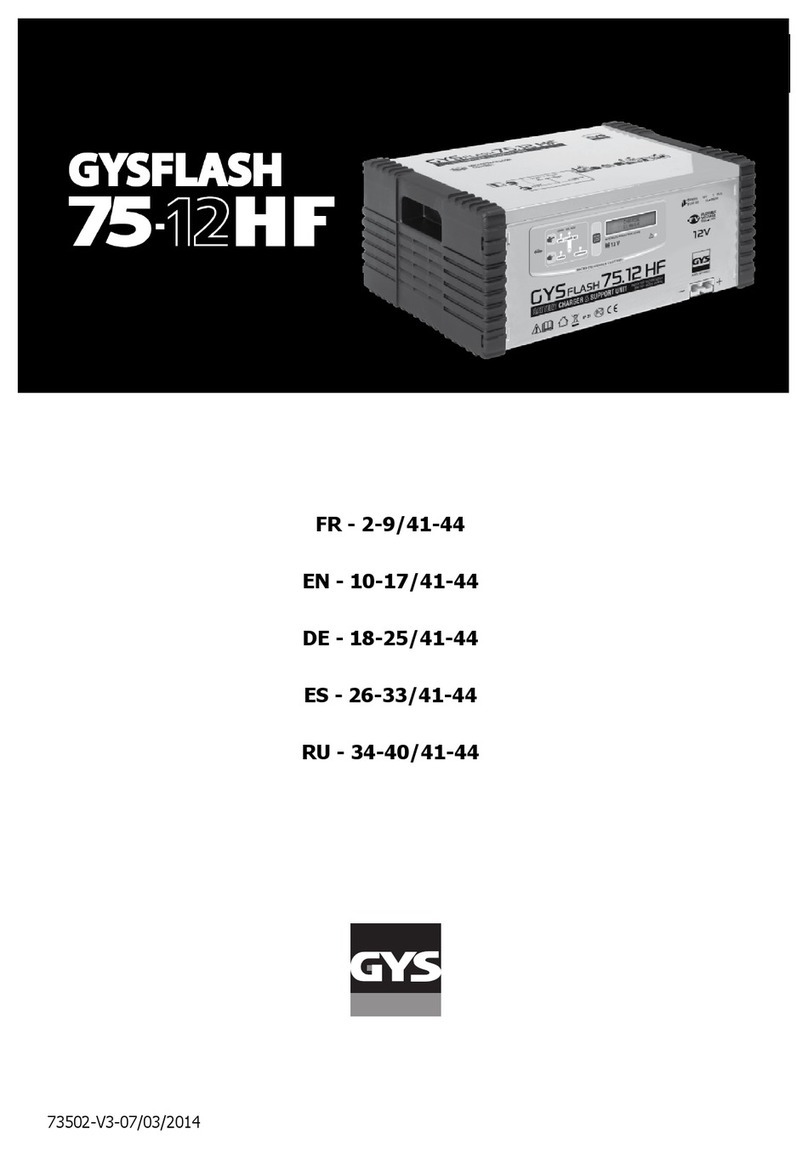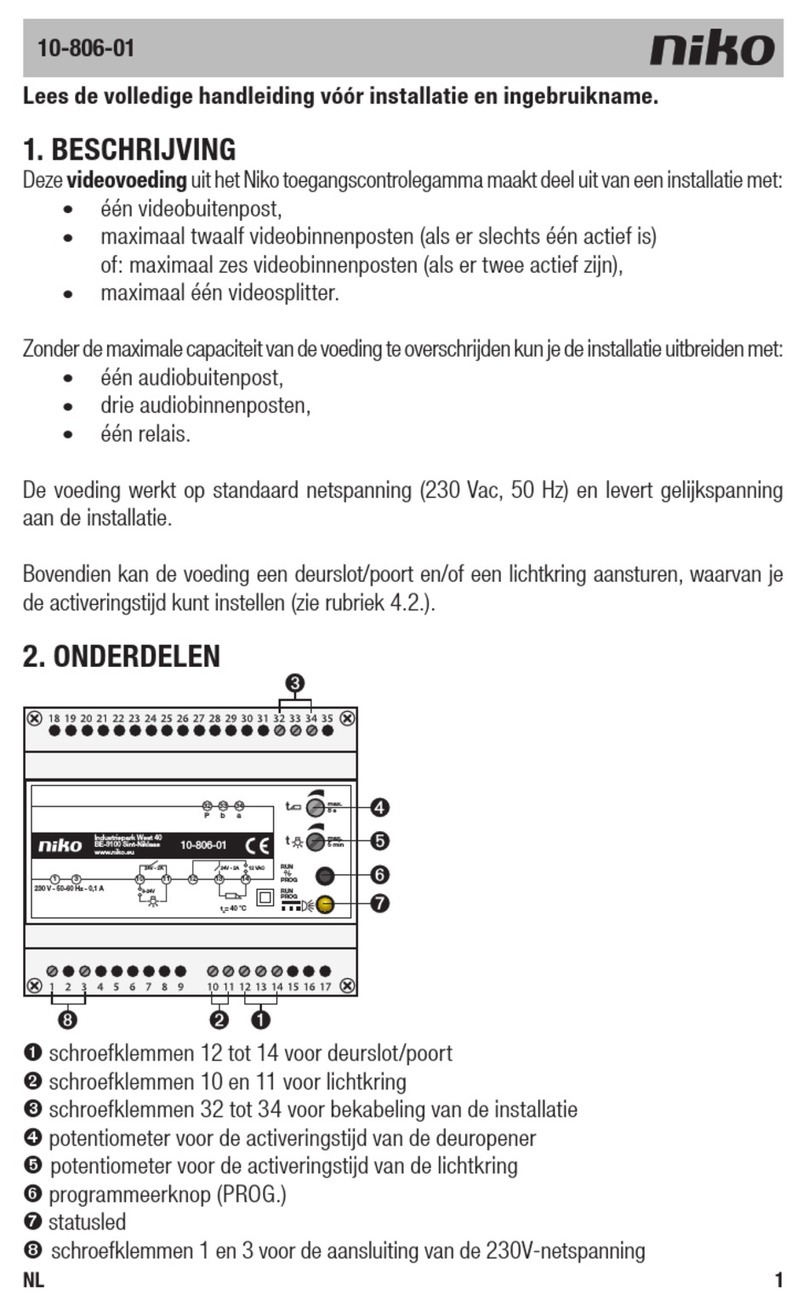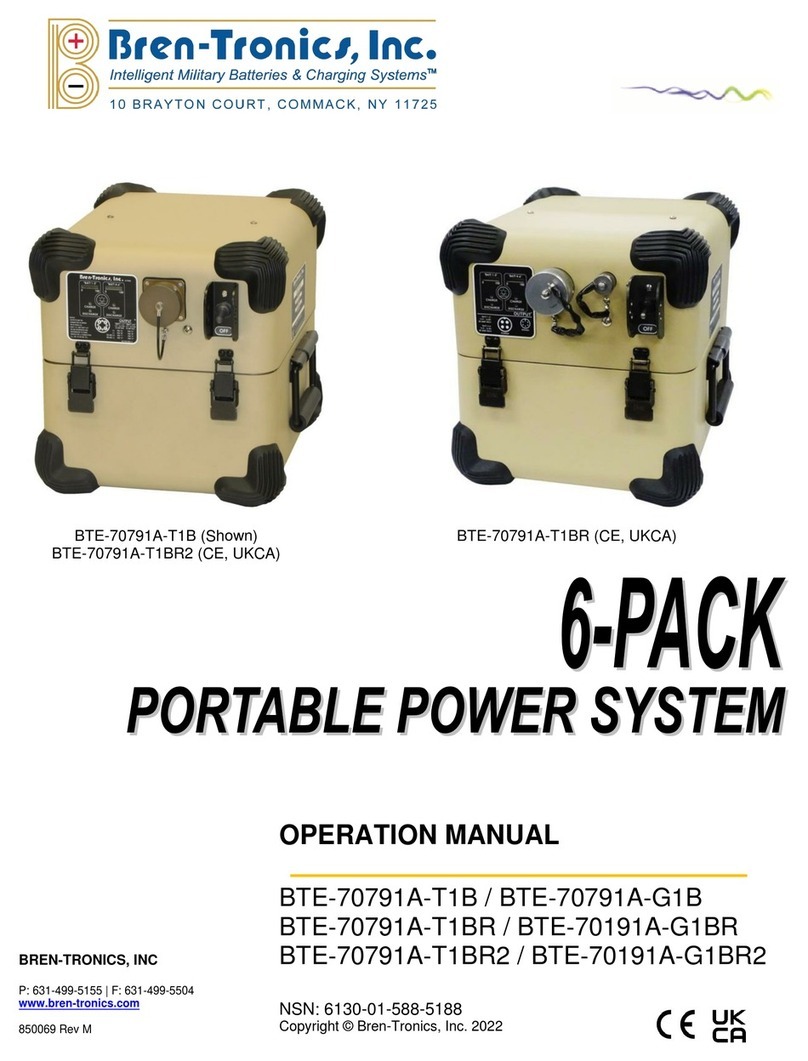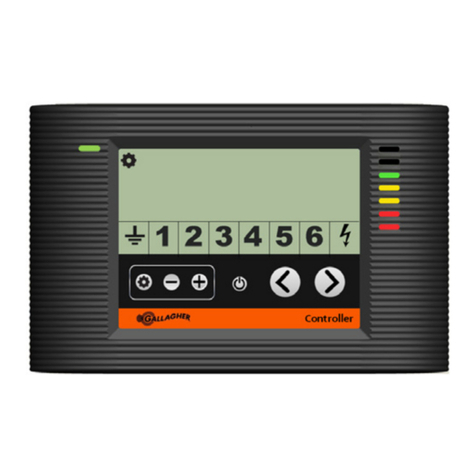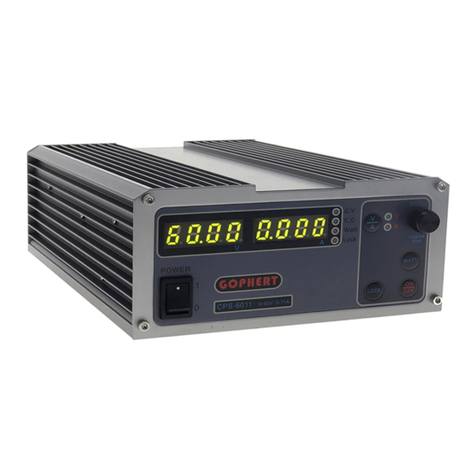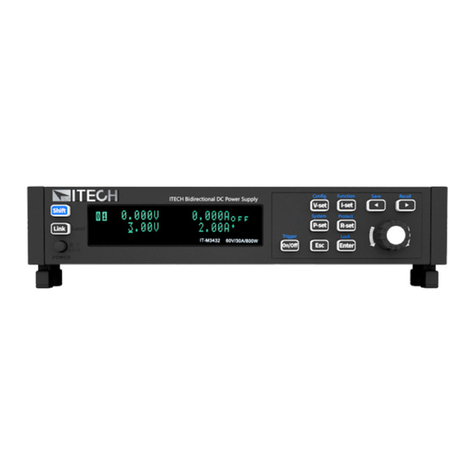TracoPower TSP SERIES User manual

Tel: +41 43 311 4511
Fax: +41 43 311 4545
www.tracopower.com
Date: 27 April 2005
Issue: 1.7
Page
Seite 1
Jenatschstrasse 1
CH-8002 Zürich
♦ TSP 070-112 ♦ TSP 140-112
♦ TSP 090-124 ♦ TSP 180-124 ♦ TSP 360-124 ♦ TSP 600-124
♦ TSP 090-124N
Operating Instructions
INDUSTRIAL POWER SUPPLIES TSP-SERIES

Tel: +41 43 311 4511
Fax: +41 43 311 4545
www.tracopower.com
Date: 27 April 2005
Issue: 1.7
Page
Seite 2
Jenatschstrasse 1
CH-8002 Zürich
4
(0.16) 110 (4.33)
85.5
(3.37)
34.5
(1.36)
39
(1.54)
33
(1.3)
110
(4.33)
35 (1.38)
4
(0.16) 110 (4.33)
85.5
(3.37)
34.5
(1.36)
39
(1.54)
33
(1.3)
54 (2.13)
110
(4.33)
125
(4.92)
80 (3.15)
125 (4.92)
4
(0.16)
92
(3.62)
34.5
(1.36)
39.5
(1.56)
47.1
(1.85)
125 (4.92)
4
(0.16)
92
(3.62)
34.5
(1.36)
39.5
(1.56)
47.1
(1.85)
165 (6.5)
125
(4.92)
Dimensions drawings:
TSP 070-112, TSP 090-124 & TSP 090-124N TSP 140-112 & TSP 180-124
TSP 360-124
TSP 600-124
Note
This instruction cannot claim all details of possible equipment variations, nor in particular can they provide for every possible
example of installation, operation or maintenance. Further information is available from your local distributor office or from the
TSP industrial power supply data sheet. Subject to change without prior notice.
In order to guarantee safe operation of these power supplies and to be able to make use of all the functions, please
read these instructions thoroughly!
Hinweis
Diese Bedienungsanleitung enthält aus Gründen der Übersichtlichkeit nicht sämtliche Detailinformationen zu allen Typen des
Produktes und kann auch nicht jeden denkbaren Fall der Aufstellung, des Betriebs oder der Instandhaltung berücksichtigen.
Weiterführende Hinweise erhalten Sie über die örtliche Vertretungen bzw. aus dem TSP industrielle Stromversorgung Daten-
blatt. Technische Änderungen jederzeit vorbehalten.
Um einen sicheren Betrieb der Stromversorgungen zu gewährleisten und alle Funktionen nutzen zu können, lesen
Sie diese Anleitun
g
bitte vollständi
g
durch!
Weight: 1.0lb
Gewicht: 0.5kg Weight: 1.4lb
Gewicht: 0.7kg
Weight: 2.4lb
Gewicht: 1.1kg
Weight: 6.0lb
Gewicht: 2.8kg

Tel: +41 43 311 4511
Fax: +41 43 311 4545
www.tracopower.com
Date: 27 April 2005
Issue: 1.7
Page
Seite 3
Jenatschstrasse 1
CH-8002 Zürich
English
1. Description and construction
The TSP power supplies are built-in units. The mounting position has to fulfil the requirements for fireproof case according to UL60950, IEC/EN
60950 or other appropriate national standard. The relevant UL regulations or equivalent national regulations must be observed during
installation.
The TSP power supplies are designed for mounting on a DIN rail TS35 (DIN EN 50022-35x15/7.5) and for operation from 115 or 230VAC,
50/60Hz (Universal input voltage range for TSP 070-112 and TSP 090-124, and auto range for TSP 140-112, TSP 180-124, TSP 360-124 und
TSP 600-124) single-phase systems.
The output voltage of the TSP power supplies is potential-free (floating), protected against short circuit and open circuit conditions (see Fig 1.1,
Fig 1.2 and Fig 1.3).
2. Installation
A sufficiently strong DIN-rail has to be provided. The correct mounting position for optimal cooling performance must be observed. Above and
below the power supply a minimum free space of 80mm [3.15in] is required and on each side of the power supply a minimum space of 50mm
[1.97in] is required which allows air convection. The air temperature measured 10mm [0.39in] below the power supply must not exceed the
specified values in the data sheet. Observe power derating above ambient temperatures of 40°C and at low line. (see Fig 4.1 and Fig 4.2)
2.1 Assembly
To fix unit on the DIN-rail, hook top part of clip on DIN-rail, push down- (see Fig 2.1) and inwards (see Fig 2.2) until you hear a clipping sound.
To remove the unit, pull the latch of the clip with the aid of an insulated flat head screwdriver (see Fig 2.3). When clip has cleared bottom DIN
rail remove the screwdriver from recess. Lift the unit off DIN-rail. See Fig 2.4.
Wall mounting or chassis mounting can be achieved by use of optional mounting brackets TSP-WMK01 (1 bracket, see Fig. 6.1) for TSP 070,
TSP 090, TSP 140 & TSP 180 or TSP-WMK02 (2 brackets, see Fig. 6.2 and Fig. 6.3) for TSP 360 & TSP 600. Remove the DIN-clips by
removing the screw and place the mounting brackets in the same place as the DIN-clips. Use the countersink screws which are included with
the wall mounting kit (1 countersink screw with TSP-WMK01 and 2 countersink screws with TSP-WMK02) to fix the mounting brackets on the
TSP power supply (tightening torque 0.8-0.9Nm).
Warning
The power supplies are constructed in accordance with the safety requirements of IEC 60950, EN60950, UL60950, UL508,
EN60204, EN50178, EN61558-2-8, IEC/EN/UL60079-15 (Protection Type “n” Class I, Zone 2, AEX nC II T4 U), ATEX 94/9/EC
(category 3; EEX nC II T4 U) and FM3611 (Class I and II, Division 2, Class III Division 1 and 2). They fulfil the requirements fo
r
CE-compatibility and carry the CE-mark and are UL & cUL approved by CSA.
The TSP built-in power supplies were designed especially for use in process automation and other industrial applications.
To comply with IEC/EN/UL60079-15 the built-in power supply requires a EXD IEC60079-1 enclosure.
Components with dangerously high voltage and high stored energy are located in the device. However, these are inaccessible.
Failure to properly maintain the power supply can result in death, severe personal injury or substantial property damage. The
power supplies may only be installed and put into operation by qualified personnel. The corresponding national
regulations (e.g. UL, ANSI, VDE, DIN) must be observed. The successful and safe operation of this power supply is dependent
on proper storage, handling, installation and operation.
The potentiometer to adjust the output voltage is only allowed to be actuated using an insulated screwdriver, because
accidental contact may be made with parts inside the power supply carrying dangerous voltages.
Please observe following points before putting the device into operation:
• Read operating instructions thoroughly.
• That the mains connection has been carried out by a competent person and protection against electrical shock is
guaranteed!
• That the device can be disconnected outside the power supply in accordance with the regulations as in IEC/EN/UL 60950
or other national regulations.
• That the protective earth is connected.
• That the input wiring is sufficiently protected and dimensioned!
• That the output wiring is dimensioned according to the maximum output current or separately protected!
• Sufficient cooling is guaranteed!
• The temperature of the housing can become very high, depending on the ambient temperature and load.
Caution:
Risk of electrical shock and electrical discharge. The power supply must not be opened until at least 5 minutes after complete
disconnection of the mains.
Electrostatic sensitive device. Qualified and trained personnel only may open the power supply.
A
ttention: In case of non-observance or exceeding the mentioned limiting value of the data sheet, the function
and electrical safety can be impaired and can destroy the power supply.
Danger: Never work on power supplies if power is applied!
Before installation ensure that the main switch is switched off and prevented from being
switched on again. In case of non-observance, touching of any live components or imprope
r
dealing with this power supply can result in death or fatal injury.

Tel: +41 43 311 4511
Fax: +41 43 311 4545
www.tracopower.com
Date: 27 April 2005
Issue: 1.7
Page
Seite 4
Jenatschstrasse 1
CH-8002 Zürich
English
2.2 Connecting cable
Only qualified personnel may carry out the installation. The devices are equipped with COMBICON plug connectors (TSP 070-112,
TSP 090-124, TSP 140-112, TSP 180-124 and TSP 360-124) or COMBICON connector (TSP 600-124). This reliable and easy-to-assemble
connection method enables a fast connection of devices and a visible isolation of the electrical connection if necessary.
2.2.1 Input (Fig. 5.1, Fig 5.2, Fig 5.3 and Fig. 5.4 ÎConnector J1):
The 100-240VAC connection is made by using the L, N and connections and has to be carried out in accordance with the local regulations.
Sufficiently dimensioned input wiring has to be ensured (see 2.2.1.1). A protective device (fuse, MCB, etc; see 2.2.1.2) and an easily accessible
isolating device for disconnecting the power supply from mains must be provided. The protective earth conductor has to be connected.
If flexible wires are used the wires have to be terminated. (e.g. by using ferrules)
Note: This unit contains an automatic input voltage selection switch. Do not change the input voltage from 110/115Vac to
230/240Vac without disconnecting the input supply line first.
2.2.1.1 Connections and terminal assignment
Solid or stranded wires Torque Stripping length
Unit Terminals Function [mm2][AWG] [Nm] [mm]
L1 & N Input Voltage (85 – 264VAC or 115/240VAC) 0.5 … 2.5 24 … 12 0.5 – 0.6 7.0
Protective Earth Conductor 0.5 … 2.5 24 … 12 0.5 – 0.6 7.0
+ & - Output Voltage (24VDC) 0.5 … 2.5 24 … 12 0.5 – 0.6 7.0
TSP 090-124
TSP 090-124N
TSP 180-124
Signal DC-OK, active output and relay outputs 0.2 … 2.5 32 … 12 0.5 – 0.6 7.0
L1 & N Input Voltage (85 – 264VAC or 115/240VAC) 0.5 … 2.5 24 … 12 0.5 – 0.6 7.0
Protective Earth Conductor 0.5 … 2.5 24 … 12 0.5 – 0.6 7.0
+ & - Output Voltage (12VDC and 24VDC) 1.0 … 2.5 18 … 12 0.5 – 0.6 7.0
TSP 070-112
TSP 140-112
TSP 360-124
Signal DC-OK, active output and relay outputs 0.2 … 2.5 32 … 12 0.5 – 0.6 7.0
L1 & N Input Voltage (115 / 230VAC) 1.0 … 4.0 18 … 10 0.5 – 0.6 7.0
Protective Earth Conductor 1.0 … 4.0 18 … 10 0.5 – 0.6 7.0
+ & - Output Voltage (24VDC) 2.0 … 4.0 12 … 10 0.5 – 0.6 8.0
TSP 600-124
Signal DC-OK, active output and relay outputs 0.2 … 2.5 32 … 12 0.5 – 0.6 7.0
2.2.1.2 Internal Fuse
2.2.1.3 Recommended external Fuses (MCB)
Model Ratings Characteristic Model Ratings Characteristic
TSP 070-112 6 - 16A / 250V B TSP 180-124 6 - 16A / 250V B
TSP 090-124(N) 6 - 16A / 250V B TSP 360-124 10 - 16A / 250V B
TSP 140-112 6 - 16A / 250V B TSP 600-124 16 - 25A / 250V B
2.2.2 Output (Fig. 5.1, Fig 5.2, Fig 5.3 and Fig. 5.4 ÎConnector J2):
The 12VDC or 24VDC connection is made using the “+” and “-“ connections. All output terminals should be connected to the load. Make sure
that all output lines are dimensioned according to the maximum output current (see 2.2.1.1) or are separately protected! The wires on the
secondary side should have large cross sections in order to keep the voltage drops on these lines as low as possible.
To achieve a reliable and shockproof connection strip the connecting ends according 2.2.1.1. If flexible wires are used the wires have to be
terminated. (e.g. by using ferrules)
At the time of delivery, the output voltage is either 12VDC (TSP xxx-112) or 24VDC (TSP xxx-124). The output voltage can be set (using an
insulated screwdriver) from 12 to 14VDC (TSP xxx-112) or 24 to 28VDC (TSP xxx-124) on the potentiometer (see Fig. 5.1, Fig. 5.2, Fig. 5.3 and
Fig. 5.4).
The device is electronically protected against overload and short circuit. In the event of malfunction, the output voltage is limited to 20VDC typ
(TSP xxx-112) or 35VDC typ (TSP xxx-124).
2.2.3 Signalling (Fig. 5.1, Fig 5.2, Fig 5.3 and Fig. 5.4 ÎConnector J2):
The two DC-OK outputs are for enabling monitoring of the functions of the power supply. A floating signal contact (see Fig. 5.1, Fig 5.2, Fig 5.3
and Fig. 5.4 ÎConnector J2, pin 6 & pin 7) and an active DC-OK signal (see Fig. 5.1, Fig 5.2, Fig 5.3 and Fig. 5.4 ÎConnector J2, pin 5) are
available. The DC-OK LED also enables a visual evaluation of the function of the power supply directly on site.
2.2.3.1 Floating contacts (Fig. 5.1, Fig 5.2, Fig 5.3 and Fig. 5.4):
The floating signal contacts opens and signals a drop in the output voltage below: TSP xxx-112 Îbetween 9 and 11VDC; TSP xxx-124 Î
between 18 and 22VDC. Relay contacts are available at TSP 070-112 and TSP 090-124(N): Connector J2, pin 4 and pin 5 / TSP 140-112, TSP
180-124 and TSP 360-124: Connector J2, pin 6 and pin 7 / TSP 600-124: Connector J5, pin 1 and pin 2). Signals and ohmic loads up to 30VDC
and currents of up to 1A can be connected. For heavily inductive loads such as relay, a suitable protection circuit (e.g. damping diode) is
necessary.
Model Ratings Marking
TSP 070-112 4.0 AH/250V F1 Î4.0 AH/250V
TSP 090-124(N) 4.0 AH/250V F1 Î4.0 AH/250V
TSP 140-112 4.0 AH/250V F1 Î4.0 AH/250V
TSP 180-124 4.0 AH/250V F1 Î4.0 AH/250V
TSP 360-124 6.3 AH/250V F1 Î6.3 AH/250V
TSP 600-124 12.0 AH/250V F1 Î12.0 AH/250V
CAUTION: For continued protection against risk of fire replace
with same type and rating of fuse! This fuse should be
changed only by authorised and trained personnel because
it is soldered on the board
If the internal fuse is triggered, there is most probably an
internal malfunction which must be inspected in the factory.
Due to that return this device to your local distributor.

Tel: +41 43 311 4511
Fax: +41 43 311 4545
www.tracopower.com
Date: 27 April 2005
Issue: 1.7
Page
Seite 5
Jenatschstrasse 1
CH-8002 Zürich
English
2.2.3.2 Active signal output (Fig. 5.1, Fig 5.2, Fig 5.3 and Fig. 5.4):
11VDC ±1VDC (TSP xxx-112) or 22VDC ±2VDC (TSP xxx-124) is applied between the “DC-OK” (TSP 070-112 and TSP 090-124(N): Connector
J2, pin 3 / TSP 140-112, TSP 180-124 and TSP 360-124: Connector J2, pin 5 / TSP 600-124: Connector J5, pin 3) and “-“ (Connector J2, pin 1)
and can carry up to 60mA (TSP xxx-112) or 30mA (TSP xxx-124). This signal output is referenced to –Vout (GND) and signals when the output
voltage drops below: TSP xxx-112 Îbetween 9 and 11VDC; TSP xxx-124 Îbetween 18 and 22VDC by switching from high to low.
The DC-OK signal is decoupled from the power output. It is thus not possible for parallel-switched devices to provide external supply. The DC-
OK signal can be directly connected to a logic input for evaluation.
2.2.3.3 Signal loop:
The two above-mentioned signals can be easily combined.
Example: Monitoring of two devices.
Use the active signal output of device 1 and loop in the floating signal output of device 2. In the event of malfunctioning a common alarm is
available. Up to 5 units can be looped in. This signal combination saves wiring costs and logic inputs.
2.2.3.4 DC-OK LED:
The DC-OK LED is a two colour LED which indicates the status of the output and enables visual evaluation of the function locally in the control
cabinet. DC-OK LED green – normal operation. DC-OK LED red – output failure if input mains is still present.
3. Function
3.1 Output characteristic curve:
In the case that the ambient temperatures is not higher than +40°C, the device can continuousely supply Iout max (see datasheet). In the event
of a higher load, the operating point follows the U/I charateristic curve by use of overcurrent protection. The output current is limited at Iout max.
by use of a constant current characteristic with automatic restart if the short circuit or over load condition has been removed.
The U/I characteristic curve ensures that heavily capacitive loads can be fed without problems.
3.2 Thermal behaviour:
The device should not be operated at higher loads than indicated on the derating graphs ÎFig. 4.1 and Fig. 4.2). The device does switch off at
thermal overload. After sufficent cooling the device will switch on again.
3.3 Parallel operation:
Maximum 5 devices ot he same type can be connected in parallel to enable increased output power. For nparallel connected devices the output
current can be increased to n x Imax. Parallel connection to increase efficiency is used for the expansion of existing systems. It is advisable to
use parallel connection if the power supply does not cover the current requirment of the most powerful consumer. Otherwise the consumers
should be spread among individual devices independent of one another.
To provide a proper and relaible start-up the jumper at connector J4 has to be set (see Fig. 5.1, Fig. 5.2, Fig. 5.3 & Fig. 5.4). If the jumper is set
between pin 1 and pin 2 of connector J4 the unit is in normal mode. If the jumper is set between pin 2 and pin 3 on connector J4 the unit can be
paralleled. At delivery this jumper is set for normal operation (between pin 1 and pin 2 of connector J4).
If the output voltage is adjusted, a uniform distribution of power is guaranteed by setting all parallel operated power supplies to exactly the same
output voltage. To ensure symmetrical distribution of power, we recommend designing all cable from the power supply as busbar of the same
length and with the same conductor cross section. The system makes it advisable to install a protective circuit at the output of each device when
more than two power supplies are connected in parallel (e.g. decoupling diode or DC fuse). This prevents high reverse feed currents in the event
of a secondary device fault.
3.3.1 Redundancy operation:
Possible by use of our redundancy module TSP-REM360. With this module and two power supplies of the TSP series (70, 90, 140, 180 and 360
watt models) a highly reliable, true redundant power system can be configured without any additional components. This module enforces the
equivalent sharing of the output current by each power supply. The system is fully redundant and provides the output power even if one power
supply has completely failed e.g. by short circuit on the output. In the event of either, one power supply failing or being disconnected, the second
unit will automatically supply the full current to the load. The redundancy of the system is monitored and if lost, indicated by an alarm output. The
inputs are hot swappable and can be loaded up to 15A each.
3.4 Buffer Module:
The TSP-BFM24 Buffer Module will hold the output voltage of a 24VDC power supply after brown outs or voltage dips of up to ten full 50Hz
cycles. During this buffer period no deterioration of the 24VDC output voltage will occur. For many applications this buffer module is an ideal
and cost effective alternative to a battery based backup system. The buffer module consists of a large bank of capacitors. When the power
supply is switched on, the buffer capacitors will be charged. This will take approximately 30 second and an opto-coupler signal indicates the
"READY" condition. When a power fail occurs, the capacitor bank is discharged, maintaining the output of the buffer module at its nominal
voltage. This condition is indicated by a "POWER FAIL" signal. The hold up time is typically 200ms at 25A and 4 seconds typically at 1,2A. After
4 seconds the buffer device will switch off the output voltage. The operation modes of the module are indicated by a LED on the front panel
also. The big advantage of this buffer solution is, that it is fully maintenance free and its storage capability does not deteriorate over the lifetime
of the product.
3.5 Uninterruptible power system (UPS):
The module TSP-BCM24 provides a professional battery management system to charge and monitor an external battery. Together with a power
supply of the TSP series (TSP 090-124, TSP 180-124 and TSP 360-124) a perfect DC-UPS system can be configured. The connected battery
will be charged and held in charge mode by the power supply. In the event of a power failure the battery will supply the output power until the
battery is discharged. As a consequence, the output voltage of the system is equivalent to the battery voltage.To avoid overcharging the battery,
an external temperature sensor adjusts the battery voltage automatically to the required end of charge voltage. This achieves a long battery life
time.
The battery is protected against deep discharge. Mains power and the battery status are monitored regulary and failures indicated by
corresponding LED’s and alarm outputs. The module provides also an external ON/OFF input to switch-off both, power supply and battery.
3.6 Remote ON/OFF:
The standard unit provides a remote on/off function by use of pin 2 at connector J3 (see Fig. 3.1, Fig. 5.1, Fig. 5.2, Fig. 5.3 & Fig. 5.4). To switch
off the power supply a connection between Connector J3 pin 2 (-S) and Connector J2, pin 1 (–Vout) by use of a 1kΩresistor has to be made. At
open connection between J3 pin 2 and J2 pin 1 the device is providing the adjusted output voltage.

Tel: +41 43 311 4511
Fax: +41 43 311 4545
www.tracopower.com
Date: 27 April 2005
Issue: 1.7
Page
Seite 6
Jenatschstrasse 1
CH-8002 Zürich
English
4. Additional information for the North American Market for UL508
The TSP power supplies are built-in units and must be installed in a cabinet with minimum dimensions of:
400mm (Width) x 500mm (Height) x 200mm (Depth)
4.1 Operating Temperature Ranges and load derating:
Model Operating Temperature Range
TSP 070-112 -10 – 40°C Î100% (40 – 60°C ÎLoad derating by 0.5W/°C) (60 – 70°C ÎLoad derating by 2.0W/°C)
TSP 090-124 & TSP 090-124N -10 – 40°C Î100% (40 – 60°C ÎLoad derating by 1.5W/°C) (60 – 70°C ÎLoad derating by 2.0W/°C)
TSP 140-112 -10 – 40°C Î100% (40 – 60°C ÎLoad derating by 3.0W/°C) (60 – 70°C ÎLoad derating by 4.0W/°C)
TSP 180-124 -10 – 40°C Î100% (40 – 60°C ÎLoad derating by 3.0W/°C) (60 – 70°C ÎLoad derating by 4.0W/°C)
TSP 360-124 -10 – 40°C Î100% (40 – 60°C ÎLoad derating by 6.0W/°C) (60 – 70°C ÎLoad derating by 8.0W/°C)
TSP 600-124 -10 – 40°C Î100% (40 – 60°C ÎLoad derating by 6.0W/°C) (60 – 70°C ÎLoad derating by 16.0W/°C)
5. Technical Specifications
5.1 Input Specifications
Order-
code
* Input
voltage
max.
Output-
** Output
voltage
*** Output
current
Input current
at full load typ.
Inrush current
max. at +25°C (<2ms)
Efficiency
typ.
Model range power Factory Set ±1% Iout max 115 VAC 230 VAC 115 VAC 230 VAC at 230VAC
TSP 070-112
TSP 090-124
TSP 090-124N
100-240VAC
85-264VAC
(47-63 Hz)
78 Watt
90 Watt
90 Watt
12 VDC
24 VDC
24 VDC
6.5 A
3.75 A
3.75 A
2.0 A
2.1 A
2.1 A
1.0 A
1.0 A
1.0 A
12.0 A 20.0 A
82.0 %
85.0 %
85.0 %
TSP 140-112
TSP 180-124
100-120VAC/
220-230VAC
156 Watt
180 Watt
12 VDC
24 VDC
13.0 A
7.5 A
2.5 A
2.8 A
1.4 A
1.5 A 13.0 A 25.0 A 85.0 %
88.0 %
TSP 360-124 85-132 VAC/
187-264 VAC 360 Watt 24 VDC 15.0 A 5.0 A 2.5 A 16.0 A 25.0 A 87.0 %
TSP 600-124 (47-63 Hz)
Auto range 600 Watt 24 VDC 25.0 A 10.0 A 5.0 A 25.0 A 30.0 A 89.0 %
* Observe output current derating at operation below an input voltage of 110VAC (see Fig. 4.2).
** Output voltage adjustable
*** Maximum current at Vout nom.
5.2 Output Specifications
Regulation
- Input Variation (Line Regulation)
- Load Variation (Load Regulation)
Vin min - Vin max
10% - 100% of Iout max
0.5% max
0.5% max
2.0% in parallel operation
Output Voltage adjustable Range
with Potentiometer
12 V Model
24 V Model
12 - 14 VDC
24 - 28 VDC
Ripple and Noise (20MHz Bandwidth) at Vin nom und Iout max 200mV pk-pk max
Overload protection Thermal protection Automatic restart
Electronic Short Circuit Protection Continuous Constant current. Automatic restart
Parallel Operation all Models; User selectable standard mode
and parallel mode by jumper on PCB
up to 5 Power Supplies possible
(Jumper position see Fig. 5.1, 5.2, 5.3 & 5.4)
Over Voltage Protection (OVP) Trigger point at 20VDC ÎTSP xxx-112
35VDC ÎTSP xxx-124
Hold-up Time at full load and Vin = 115VAC
at full load and Vin = 230VAC
10ms min.
20ms min
Reverse Voltage Protection 35VDC (40VCD < 1 sec.)
Status Indicator (two colours) Green LED
Red LED
Normal operation
Output failure – if AC input mains is present
Power Good Signal Trigger threshold TSP xxx-112
TSP xxx-124(N)
Active output signals TSP 070-112
(referenced to –Vout) TSP 140-112
TSP 090-124(N)
TSP xxx-124
Relay output ÎDC-OK = Contact closed
9 – 11VDC
18 – 22VDC
11.0VDC ±1.0VDC / 20mA max.
11.0VDC ±1.0VDC / 40mA max.
22.0VDC ±2.0VDC / 10mA max.
22.0VDC ±2.0VDC / 20mA max.
30VDC / 1.0A max.
Max. Capacitive Load unlimited

Tel: +41 43 311 4511
Fax: +41 43 311 4545
www.tracopower.com
Date: 27 April 2005
Issue: 1.7
Page
Seite 7
Jenatschstrasse 1
CH-8002 Zürich
English
5.3 General Specifications
Operating Temperature Range See Fig. 4.1 and Fig. 4.2 -25°C … +70°C (above +40°C load derating)
-13°F … +158°F (above +104°F load derating)
Cooling Convection cooling; no internal fan
Storage Temperature Range -25°C … +85°C
-13°F … +185°F
Load Derating above +40°C (104°F) see Fig. 4.1
Humidity (non condensing) 95% rel H max.
Pollution Degree 2
Temperature Coefficient 0.02%/K
Reliability, calculated MTBF in accordance to IEC 61709 >350'000 hours
Switching Frequency depending on Model 50 … 140kHz typ.
Remote ON/OFF see Fig. 5.1, 5.2, 5.3 & 5.4 2 pin connector (see Fig. 3.1)
connect –S via a 1kΩto –Vout ÎDevice off
Safety class in accordance to IEC 536 Class 1
Case protection in accordance to IEC 529 IP20
Isolation See Safety Standards
Safety Standards
according to
- Information Technology Equipment
- Industrial Control Equipment
- Electrical Equipment of machines
- Electronic Equipment of power installation
- Control Equipment for Hazardous Locations
- Control Equipment for Hazardous Locations
- Control Equipment for Hazardous Locations
- Safety Transformers for SMPS
- Limited power source (model TSP 090-124N)
IEC / UL / EN 60950
UL 508C
EN 60204
EN 50178
IEC/EN 60079-15 (category 3; EEX nC II T4 U)
ANSI/UL 60079-15 (Protection Type « n » Class I, Zone 2, AEX nC II T4 U)
FM3611 (Class I and II, Division 2, Class III Division 1 and 2)
ANSI/ISA 12.12.01 (Class I and II Division 2, Class III Division 1 and 2
EN 61558-2-8
EN 60950 sec. 2.5 and NEC Class 2
Safety Approvals CB-Scheme as per IEC 60950
UL / cUL 60950 recognised
UL / cUL 508 listed
ATEX 94/9/EC (category 3; EEX nC II T4 U)
ANSI/UL 60079-15 (Protection Type « n » Class I, Zone 2, AEX nC II T4 U)
FM3611 (Class I and II, Division 2, Class III Division 1 and 2)
ANSI/ISA 12.12.01 (Class I and II Division 2, Class III Division 1 and 2
EN 50178
EN 61558-2-8
Electromagnetic compatibility
(EMC) Emissions
in accordance to the product family
standard Power Supply Industrial
Area
EN 61204-3
Conducted EMI on terminals
Radiated EMI
EN 55022 Class B, EN 55011 Class B, FCC Part 15-B
EN 55022 Class B, EN 55011 Class B, FCC Part 15-B
Input Current harmonics EN 61000-3-2 Class A
• TSP 070-112 and TSP 090-124 Îup to full output power
• TSP 140-112 and TSP 180-124 Îup to 120 watt only
• TSP 360-124 Îup to 240 watt only
• TSP 600-124 Îup to 480 watt only
Flicker EN 61000-3-3
Electromagnetic compatibility
(EMC) Immunity
in accordance to the product family
standard Power Supply Industrial
Area
EN 61204-3
Standard Level Description Perf. criteria
Electrostatic discharge (ESD)
Electrostatic discharge (ESD)
Radiated RF Fields [80 – 1000MHz]
Electrical fast transients / Bursts
Electrical fast transients / Bursts
Surge (Mains Supply)
Surge (Mains Supply)
Surge (Signal Supply)
Immunity to conducted radio frequency disturbances [0.15 –
80MHz]
Voltage Dips
EN 61000-4-2 ±4kV Contact discharge B
EN 61000-4-2 ±8kV Air discharge B
EN 61000-4-3 10V/m B
EN 61000-4-4 ±2kV Mains Supply B
EN 61000-4-4 ±1kV Signal Supply B
EN 61000-4-5 ±1kV between L & N B
EN 61000-4-5 ±2kV between L & PE and N & PE B
EN 61000-4-5 ±1kV between ax & PE B
EN 61000-4-6 10V B
EN 61000-4-11 70% UN / 40%/100% UN B / C
Environment Vibration
Shock
IEC 60068-2-6 3 axis, sine sweep, 10 … 55Hz, 1g, 1oct/min.
IEC 60068-2-27 3 axis, 15g, half sine, 11ms
Enclosure Material Aluminium (Chassis) / Zinc plated Steel (Cover)
Mounting DIN-Rail mounting
Wall mounting
For DIN-Rails as per EN 50022-35 x 15 / 7.5
(snap-on self-locking spring)
With wall mounting bracket option TSP-WMK01 for TSP 070, 090, 140 & 180
(see datasheet page 10) option TSP-WMK02 for TSP 360 & 600
Connection Pluggable screw terminals (plugs included)

Tel: +41 43 311 4511
Fax: +41 43 311 4545
www.tracopower.com
Date: 27 April 2005
Issue: 1.7
Page
Seite 8
Jenatschstrasse 1
CH-8002 Zürich
Deutsch
6. Beschreibung und Aufbau
Die TSP Stromversorgungen sind DIN-Schienen Einbaugeräte. Der Einbauort muss die Bedingungen für feuersichere Gehäuse gemäss
IEC/EN/UL 60950 erfüllen. Für die Installation der Netzteile sind die einschlägigen DIN/VDE Bestimmungen oder länderspezifischen
Vorschriften zu beachten.
Die TSP Netzteile sind zur Montage auf Normprofilschiene TS35 (DIN EN 50022-35x15/7.5) konstruiert und zum Anschluss an 1 phasige
Wechselstromnetz 115 oder 230VAC, 50/60Hz (universeller Eingangsspannungsbereich; TSP 070-112, TSP 090-124 und TSP 090-124N,
sowie automatische Umschaltung; TSP 140-112, TSP 180-124, TSP 360-124 und TSP 600-124) ausgelegt.
Die Ausgangsspannung der TSP Stromversorgungen sind potentialfrei, kurzschluss- und leerlauffest (siehe Fig. 1.1, Fig. 1.2 und Fig. 1.3).
7. Installation
Auf eine ausreichende Stabilität der tragenden Normprofilschiene ist zu achten. Zwecks optimaler Kühlung ist die richtige Einbaulage zu
beachten. Der Freiraum oberhalb und unterhalb der Netzteile soll mindestens 80mm betragen und seitlich ist ein Abstand von mindestens
50mm einzuhalten. Die Zulufttemperatur bei Betriebsbedingungen, 10mm unterhalb des Netzteiles gemessen, darf die im Datenblatt
spezifizierten Werte nicht überschreiten. Leistungsreduktion bei Betriebstemperaturen über 40°C sowie tiefer Eingangsspannung sind zu
beachten (siehe Fig. 4.1 und Fig. 4.2)!
7.1 Montage
Um die TSP Stromversorgungen auf die Normprofilschiene zu montieren, wird es mit der Tragschienenführung (DIN-Clip) in die
Normprofilschiene eingehängt (siehe Fig. 2.1) und nach unten eingerastet (siehe Fig. 2.2).
Um die TSP Stromversorgung von der Normprofilschiene zu demontieren, führen Sie einen isolierten Flachkopf-Schraubendreher, in die dafür
vorgesehene Öffnung an der Tragschienenführung unterhalb der TSP Stromversorgung und hängen die Stromversorgung unten aus (siehe Fig.
2.3). Wenn die Tragschienenführung am unteren Rand der Normprofilschiene ausgehängt ist, entfernen Sie den Schraubendreher aus der
Öffnung an der Tragschienenführung und hängen die Stromversorgung komplett aus der Normprofilschiene aus (siehe Fig. 2.4).
Warnung: Bei Nichtbeachten sowie bei Überschreitung der im Datenblatt genannten Grenzwerte besteht
Gefahr einer Überhitzung, die zur Beeinträchtigung der Funktion sowie der elektrischen Sicherheit
führt und die Zerstörung des Netzteiles zur Folge haben kann.
Vor Beginn der Installations- oder Instandhaltungsarbeiten ist der Hauptschalter der Anlage
auszuschalten und gegen wieder einschalten zu sichern. Beim Nichtbeachten kann das
Berühren spannungsführender Teile oder unsachgemässer Umgang mit dieser Stromversor-
gung den Tod oder schwere Körperverletzung zur Folge haben.
Vorsicht: Niemals bei anliegender Spannung arbeiten! Lebensgefahr!
Warnhinweise
Die elektrische Sicherheit ist durch einen Geräteaufbau nach IEC/EN60950, UL60950, UL508, EN60204, EN50178, EN61558-
2-8, IEC/EN/UL60079-15 (Schutzklasse “n” Klasse I, Zone 2, AEX nC II T4 U), ATEX 94/9/EC (Kategorie 3; EEX nC II T4 U),
A
TEX 94/9/EC (Klasse I, Zone 2, AEX nC C T4 U) und FM3611 (Klasse I und II, Division 2, Klasse III Division 1 und 2
gewährleistet. Sie entspricht den einschlägigen Anforderungen und Normen zur CE-Konformität und sind von CSA UL & cUL
zertifiziert.
Die TSP Einbaustromversorgung ist ausgelegt für den Einsatz im Industriebereich.
Um die IEC/EN/UL 60079-15 einzuhalten muss die TSP Stromversorgung in ein EXD IEC60079-1 Gehäuse eingebaut werden.
Beim Betrieb der Stromversorgungen stehen zwangsläufig bestimmte Teile (berührungsgeschützte) unter gefährlicher
Spannung. Unsachgemässer Umgang mit den Stromversorgungen kann deshalb zu Tod oder schweren Körperverletzungen
sowie zu erheblichen Sachschäden führen. Die Installation und Inbetriebnahme darf nur von entsprechend qualifiziertem
Fachpersonal durchgeführt werden. Dabei sind die jeweiligen länderspezifischen Vorschriften (z.B. VDE, DIN) einzuhalten.
Der einwandfreie und sichere Betrieb dieses Netzteiles setzt fachgerechten Transport, Lagerung und Installation voraus.
Die Betätigung des Potentiometers zur Einstellung der Ausgangsspannung ist nur mittels isoliertem Schraubendreher nach DIN
7437 zulässig, da unbeabsichtigt im Innern des Gerätes Teile mit gefährlicher elektrischer Spannung berührt werden können.
Vor der Inbetriebnahme sind folgende Hinweise zu beachten:
• Betriebsanleitung vollständig durchlesen.
• Der Netzanschluss fachgerecht ausgeführt und der Schutz gegen elektrischen Schlag sichergestellt ist!
• Das Netzteil nach den Bestimmungen der IEC/EN/UL 60950 oder anderen länderspezifischen Bestimmungen ausserhalb
der Stromversorgung spannungslos schaltbar ist (z.B. durch den primärseitigen Leitungsschutzschalter)!
• Das der Schutzleiter angeschlossen ist!
• Das alle Zuleitungen ausreichend abgesichert und dimensioniert sind¨
• Das alle Ausgangsleitungen dem max. Ausgangstrom des Netzteiles entsprechend dimensioniert oder gesondert
abgesichert sind!
• Das ausreichend Konvektion gewährleistet ist!
• Je nach Umgebungstemperatur und Belastung der Stromversorgung kann die Gehäusetemperatur hohe Werte annehmen!.
Achtung:
In der Stromversorgung befinden sich Bauelemente mit lebensgefährlicher Spannung und hoher Energie! Gefahr durch
elektrischen Schlag und Energie. Das öffnen der Netzteile ist frühestens 5 Minuten nach allpoligem Abtrennen des
Netzanschlusses zulässig.
Elektrostatisch gefährdete Bauelemente. Nur qualifiziertes und geschultes Fachpersonal dürfen die Netzteile öffnen.

Tel: +41 43 311 4511
Fax: +41 43 311 4545
www.tracopower.com
Date: 27 April 2005
Issue: 1.7
Page
Seite 9
Jenatschstrasse 1
CH-8002 Zürich
Deutsch
Eine Wand- oder Chassismontage kann mit der optional erhältlichen Wandmontagehalterung TSP-WMK01 (1 Halterung, siehe Fig.6.1) für TSP
070, TSP 090, TSP 140, TSP 180 oder TSP-WMK02 (2 Halterungen; siehe Fig. 6.2 und Fig. 6.3) für TSP 360 und TSP 600 ermöglicht werden.
Entfernen Sie die DIN-Clips mittels entfernen der Schrauben und platzieren die Wandmontagehalterungen am selben Ort wie die DIN-Clips.
Benutzen Sie die Senkkopfschrauben welche mit den Wandmontagehalterungen mitgeliefert werden (TSP-WMK01 beinhaltet 1
Senkkopfschraube und TSP-WMK02 beinhaltet 2 Senkkopfschrauben) um die Wandmontagehalterungen an der TSP-Stromversorgung zu
befestigen (Drehmoment 0.8-0.9Nm).
7.2 Verbindungskabel
Die Installation darf nur durch qualifiziertes und geschultes Fachpersonal durchgeführt werden. Die Stromversorgungen sind mit
COMBICON-Steckverbindungen (TSP 070-112, TSP 090-124, TSP 140-112, TSP 180-124 und TSP 360-124) oder mit COMBICON-
Anschlussklemmen (TSP 600-124) ausgerüstet. Diese zuverlässige und montagefreundliche Verbindungsart ermöglicht einen schnellen
Geräteanschluss und eine sichtbare Trennung der elektrischen Verbindung im Bedarfsfall.
7.2.1 Eingang (siehe Fig. 5.1, Fig. 5.2, Fig.5.3 und Fig. 5.4 ÎVerbinder J1):
Der 100-240VAC Anschluss erfolgt über die Schraubverbindungen L, N und und muss entsprechend den Bestimmungen der EN60950,
VDE0100, VDE0160 oder länderspezifischen Vorschriften ausgeführt werden. Eine Schutzeinrichtung (Sicherung, Leitungsschutzschalter, etc.;
siehe 7.2.1.1) und leicht zugängliche Trenneinrichtung zum Freischalten des Netzteiles muss vorgesehen werden. Ein weiterer Geräteschutz ist
nicht erforderlich, da eine interne Sicherung vorhanden ist.
Bei Verwendung mehrdrahtiger Leiter sind die Anschlussenden für die Klemmenmontage vorzubereiten. (z.B. durch Verwendung von
Aderendhülsen).
Achtung: Diese Stromversorgung hat einen automatischen Eingangsspannungswahlschalter. Ändern Sie die
Eingangsspannung nicht von 110/115Vac zu 230/240Vac bevor Sie den Eingang spannungsfrei geschaltet haben.
7.2.1.1 Anschluss und Klemmenbelegung
Starr oder Flexible Kabel Drehmoment Abisolierungslänge
Model Klemmen Funktion [mm2][AWG] [Nm] [mm]
L1 & N Eingangsspannung (85 – 264VAC oder 115/230VAC) 0.5 … 2.5 24 … 12 0.5 – 0.6 7.0
Schutzleiteranschluss 0.5 … 2.5 24 … 12 0.5 – 0.6 7.0
+ & - Ausgangsspannung (24VDC) 0.5 … 2.5 24 … 12 0.5 – 0.6 7.0
TSP 090-124
TSP 090-124N
TSP 180-124
Signal DC-OK, aktiver Ausgang oder Relais Ausgang 0.2 … 2.5 32 … 12 0.5 – 0.6 7.0
L1 & N Eingangsspannung (85–264VAC oder 115/230VAC) 0.5 … 2.5 24 … 12 0.5 – 0.6 7.0
Schutzleiteranschluss 0.5 … 2.5 24 … 12 0.5 – 0.6 7.0
+ & - Ausgangsspannung (12VDC and 24VDC) 1.0 … 2.5 18 … 12 0.5 – 0.6 7.0
TSP 070-112
TSP 140-112
TSP 360-124
Signal DC-OK, aktiver Ausgang oder Relais Ausgang 0.2 … 2.5 32 … 12 0.5 – 0.6 7.0
L1 & N Eingangsspannung (115 / 230VAC) 1.0 … 4.0 18 … 10 0.5 – 0.6 7.0
Schutzleiteranschluss 1.0 … 4.0 18 … 10 0.5 – 0.6 7.0
+ & - Ausgangsspannung (24VDC) 2.0 … 4.0 12 … 10 0.5 – 0.6 8.0
TSP 600-124
Signal DC-OK, aktiver Ausgang oder Relais Ausgang 0.2 … 2.5 32 … 12 0.5 – 0.6 7.0
7.2.1.2 Interne Sicherung
7.2.1.3 Empfohlene externe Sicherungen (Leitungsschutz)
Model Werte Charakteristik Model Werte Charakteristik
TSP 070-112 6 - 16A / 250V B TSP 180-124 6 - 16A / 250V B
TSP 090-124(N) 6 - 16A / 250V B TSP 360-124 10 - 16A / 250V B
TSP 140-112 6 - 16A / 250V B TSP 600-124 16 - 25A / 250V B
7.2.2 Ausgang (siehe Fig. 5.1, Fig. 5.2, Fig.5.3 und Fig. 5.4 ÎVerbinder J2):
Der 12VDC oder 24VDC Anschluss erfolgt über die Schraubverbindungen “+“ und “-“. Alle Ausgangs–Anschlussklemmen müssen an die Last
angeschlossne werden. Es ist sicherzustellen, dass alle Ausgangsleitungen dem maximalen Ausgangsstrom entsprechend dimensioniert (siehe
7.2.1.1) oder gesondert abgesichert sind. Die sekundärseitigen Kabel sollten grosse Querschnitte haben, um die Spannungsabfälle auf den
Leitungen so klein wie möglich zu halten.
Um einen zuverlässigen und berührungssicheren Anschluss zu gewährleisten sollten die Anschlussenden gemäss den in der Tabelle 7.2.1.1
angegebenen Längen abisoliert werden. Bei Verwendung mehrdrahtiger Leiter sind die Anschlussenden für die Klemmenmontage
vorzubereiten. (z.B. durch Verwendung von Aderendhülsen).
Die eingestellt Ausgangsspannung beträgt bei der Auslieferung entweder 12VDC (TSP xxx-112) oder 24VDC (TSP xxx-124). Die
Ausgangsspannung kann mit einem isolierten Flachklingenschraubendreher am Potentiometer (siehe Fig. 5.1, Fig. 5.2, Fig. 5.3 und Fig. 5.4)
von 12 bis 14Vdc (TSP xxx-112) oder 24 bis 28VDC (TSP xxx-124) eingestellt werden.
Die Stromversorgung ist elektronisch überlast- und kurzschlussfest. Die Ausgangsspannung wird im Fehlerfall auf maximal 20VDC (TSP xxx-
112) oder 35VDC (TSP xxx-124) begrenzt.
Model Ratings Marking
TSP 070-112 4.0 AH/250V F1 Î4.0 AH/250V
TSP 090-124(N) 4.0 AH/250V F1 Î4.0 AH/250V
TSP 140-112 4.0 AH/250V F1 Î4.0 AH/250V
TSP 180-124 4.0 AH/250V F1 Î4.0 AH/250V
TSP 360-124 6.3 AH/250V F1 Î6.3 AH/250V
TSP 600-124 12.0 AH/250V F1 Î12.0 AH/250V
Achtung: Um einen dauernden Schutz gegen Feuergefahr zu
gewährleisten muss die Sicherung mit einer Sicherung
gleichen Typs und Wert ersetzt werden! Das Ersetzen der
Sicherung sollte nur durch autorisiertes und geschultes Personal
erfolgen, da die Sicherung eingelötet ist.
Löst die interne Sicherung aus, liegt mit hoher Wahrscheinlichkeit ein
Gerätedefekt vor. In dem Fall ist eine Überprüfung des Gerätes im
Werk erforderlich. Dazu returnieren Sie das Gerät zum lokalen
Lieferanten.

Tel: +41 43 311 4511
Fax: +41 43 311 4545
www.tracopower.com
Date: 27 April 2005
Issue: 1.7
Page
Seite 10
Jenatschstrasse 1
CH-8002 Zürich
Deutsch
7.2.3 Signalisierung (siehe Fig. 5.1, Fig. 5.2, Fig.5.3 und Fig. 5.4 ÎVerbinder J2):
Die beiden DC-OK Ausgänge dienen der präventiven Funktionsüberwachung der Stromversorgung. Es steht ein potentialfreier Signalkontakt (siehe
Fig. 5.1, Fig. 5.2, Fig. 5.3 und Fig. 5.4 ÎVerbinder J2, Pin 6 & Pin 7) und ein aktives DC-OK Signal (siehe Fig. 5.1, Fig. 5.2, Fig. 5.3 und Fig. 5.4 Î
Verbinder J2, Pin 5) zur Verfügung. Zusätzlich ermöglicht die DC-OK LED eine Funktionsauswertung der Stromversorgung direkt am Einsatzort.
7.2.3.1 Potentialfreier Kontakt (siehe Fig. 5.1, Fig. 5.2, Fig.5.3 und Fig. 5.4):
Der potentialfreie Signalkontakt signalisiert durch Öffnen eine Unterschreitung der Ausgangsspannung: TSP xxx-112 Îzwischen 9 und
11VDC; TSP xxx-124 Îzwischen 18 und 22VDC. Der potentialfreie Relaiskontakt ist beim TSP 070-112 und TSP 0901-124(N): Verbinder J2,
Pin 4 and Pin 5 / TSP 140-112, TSP 180-124 und TSP 360-124: Verbinder J2, Pin 6 und Pin 7 / TSP 600-124: Verbinder J5, Pin 1 und Pin 2
vorhanden. Es können Signale und ohmsche Lasten bis max. 30VDC und Ströme von max. 1A geschaltet werden. Beim schalten von stark
induktiven Lasten, wie z.B. Relais, ist eine geeignete Schutzbeschaltung (z.B. Freilaufdioden) erforderlich.
7.2.3.2 Aktiver Signalausgang (siehe Fig. 5.1, Fig. 5.2, Fig.5.3 und Fig. 5.4):
11VDC ±1VDC (TSP xxx-112) oder 22VDC ±2VDC (TSP xxx-124) liegt zwischen den Anschlussklemmen DC-OK (TSP 070-112 und TSP 090-
124(N): Verbinder J2, Pin 3 / TSP 140-112, TSP 180-124 und TSP 360-124: Verbinder J2, Pin5 / TSP 600-124: Verbinder J5, Pin 3) und “-“
(Verbinder J2, Pin 1) an und kann mit bis zu 60mA (TSP xxx-112) oder 30mA (TSP xxx-124) belastet werden. Die Referenz dieses
Signalausgang ist –Vout (GND) und signalisiert durch Wechsel von “aktiv high“ auf “low“ eine Unterschreitung der Ausgangsspannung: TSP
xxx-112 Îzwischen 9 und 11VDC; TSP xxx-124 Îzwischen 18 und 22VDC.
Das DC-OK Signal ist vom Power-Ausgang entkoppelt. Somit ist eine Fremdeinspeisung durch parallelgeschaltete Stromversorgungen
ausgeschlossen. Das DC-OK Signal kann zur Auswertung direkt an einen Logikeingang angeschlossen werden.
7.2.3.3 Signalschleifen:
Die beiden vorher genannten Signalausgänge lassen sich auf einfache Weise kombinieren.
Beispiel: Überwachung von zwei Geräten.
Nutzen Sie den aktiven Meldeausgang von der Stromversorgung 1 und schleifen Sie den potentialfreien Meldeausgang von der
Stromversorgung 2 ein. Bei Funktionsstörung erhalten Sie eine Sammelstörmeldung. Es können bis zu 5 Stromversorgungen eingeschleift
werden. Diese Signalkombination spart Verdrahtungskosten und Logikeingänge.
7.2.3.4 DC-OK LED:
Die DC-OK LED ist ein zweifarben LED welche eine Funktionsauswertung vor Ort am Schaltschrank ermöglicht. DC-OK LED leuchtet grün –
normale Funktion. DC-OK LED leuchtet rot – Fehlfunktion des Ausganges bei anliegender Eingansspannung.
8. Funktion:
8.1 Ausgangskennlinie:
Sofern die Umgebungstemperatur nicht höher als +40°C beträgt kann die Stromversorgung Iout max liefern (siehe Datenblatt). Bei stärkerer
Belastung durchläuft der Arbeitspunkt, mittels einem Überstromschutz, eine U/I Kennlinie. Der Ausgangstrom wird durch eine elektronische
Strombegrenzung auf Iout max begrenzt und startet wieder automatisch auf wenn der sekundäre Kurzschluss oder Überlastkondition behoben ist.
Die U/I Kennlinie gewährleistet, dass starke Kapazitive Lasten als Verbraucher problemlos versorgt werden können.
8.2 Temperaturverhalten:
Die Stromversorgungen sollten nicht mit höheren Belastungen betrieben werden als in den Leistungsreduktionskurven angegeben wird (siehe
Fig. 4.1 und Fig. 4.2). Die Stromversorgungen schalten bei thermischer Überlast aus und schalten nach genügender Abkühlung wieder ein.
8.3 Parallelbetrieb:
Bis zu 5 typengleiche Stromversorgungen können zur Leistungserhöhung parallel geschaltet werden. Bei nparallel geschalteten Stromversorgungen
kann der Ausgangstrom auf n x Iout max erhöht werden. Die Parallelschaltung zur Leistungserhöhung findet ihren Einsatz bei der Erweiterung
bestehender Anlagen. Es wird eine Parallelschaltung empfohlen, wenn die Stromversorgung nicht den Strombedarf des Leistungsstärksten Verbrauer
abdeckt. Ansonsten sollten die Verbraucher auf voneinander unabhängige Einzelgeräte aufgeteilt werden.
Um ein sicheres und zuverlässiges Aufstarten zu gewährleisten sollte der Jumper J4 gesetzt werden (siehe Fig. 5.1, Fig. 5.2, Fig. 5.3 und Fig. 5.4). Ist
der Jumper zwischen Pin 1 und Pin 2 des Verbinders J4 gesetzt ist die Stromversorgung für einen normalen Betrieb eingestellt. Um typengleiche
Stromversorgungen parallel zuschalten muss der Jumper zwischen Pin 2 und Pin 3 des Verbinders J4 gesetzt sein. Bei der Auslieferung ist dieser
Jumper für den Normalbetrieb eingestellt (zwischen Pin 1 und Pin 2 der Verbinders J4).
Wird eine Justierung der Ausgangsspannung durchgeführt, so wird eine gleichmässige Stromaufteilung durch exakte Einstellung sämtlicher parallel
betriebener Stromversorgungen auf eine gleiche Ausgangsspannung gewährleistet. Für eine symmetrische Stromaufteilung empfehlen wir, alle
Kabelverbindungen von der Stromversorgung zu einer Sammelschiene in gleicher Länge und mit dem gleichen Leiterquerschnitt auszuführen!
Systembedingt sollte bei Parallelschaltung von mehr als zwei Stromversorgungen eine Schutzbeschaltung an jeden einzelnen
Stromversorgungsausgang installiert werden (z.B. Entkopplungsdioden oder DC-Sicherung). Somit werden bei einem Stromversorgungsdefekt hohe
rückwärtsgespeiste Ströme vermieden.
8.4 Redundanzbetrieb:
Ein echter und sehr zuverlässiger Redundanzbetrieb kann mit dem Einsatz unseres Redundanzmoduls TSP-REM360 und zwei Stromversorgungen
aus unserer TSP Familie (TSP 070, TSP 090, TSP 140, TSP 180 und TSP 360) gewährleistet werden, ohne das zusätzlich externe Komponenten
angeschlossen werden müssen. Dieses Modul sichert eine äquivalente Aufteilung des Ausgangsstroms jeder Stromversorgung. Dieses System ist
wirklich redundant und stellt selbst dann noch die volle Ausgangsleistung zur Verfügung auch wenn eine Stromversorgung ist komplett ausgefallen z.B.
Kurzschluss am Ausgang. Kommt es zu einem Stromversorgungsdefekt oder wird eine Stromversorgung abgehängt übernimmt automatisch die
andere Stromversorgung unterbrechungsfrei die vollständige Stromversorgung der Applikation. Die Redundanz des Systems ist überwacht und wenn
die Redundanz nicht mehr gewährleistet ist, wird dies mittels einem Signalausgang signalisiert.
8.5 Puffermodul:
Das TSP-BFM24 Puffermodul hält die Ausgangsspannung konstant auf 24VDC, selbst wenn die Eingangsspannung für 10 voll 50Hz Zyklen ausfällt.
Für viele Applikationen ist dieses Modul eine ideale und kostengünstige Alternative zu einem Batterie-Backup System. Dieses Puffermodul beinhaltet
eine grosse Kondensatorenbank. Sobald die Stromversorgung eingeschaltet wird lädt sich dies Kondensatorenbank auf. Die Aufladung dieser
Kondensatorenbank dauert ca. 30 Sekunden und ein Optokoppler-Signal signalisiert wenn das Modul zum Einsatz bereit ist. Sobald die
Eingangsspannung abfällt wird die Kondensatorenbank entladen und hält die Ausgangsspannung am Puffermodul konstant auf dem nominalen Wert.
Diese Kondition wird mittels dem „Power-Fail Signal“ signalisiert. Die Überbrückungszeit beträgt typisch 200ms bei einem Ausgangsstrom von 25A und
typisch 4 Sekunden bei einem Ausgangsstrom von 1.2A. Nach 4 Sekunden schaltet das Puffermodul automatisch ab. Der Betriebsmoduls des Moduls
wird durch eine LED, in der Frontabdeckung, angezeigt. Der grosse Vorteil dieses Puffermoduls ist, das es wartungsfrei ist und die Speicherkapazität
sich über die Lebensdauer des Moduls nicht verändert.

Tel: +41 43 311 4511
Fax: +41 43 311 4545
www.tracopower.com
Date: 27 April 2005
Issue: 1.7
Page
Seite 11
Jenatschstrasse 1
CH-8002 Zürich
Deutsch
8.6 Unterbrechungsfreies Stromversorgungssystem (UPS):
Das TSP-BCM24 Modul stellt ein professionelles Batteriemanagementsystem, zum laden und überwachen von externen Batterien, zur
Verfügung. Mit einem Standardgerät der TSP Familie (TSP 090-124, TSP 180-124 oder TSP 360-124) zusammen kann ein perfektes DC-UPS
System zusammengestellt werden. Die angeschlossene Batterie wird durch die Stromversorgung geladen und in Schwebeladung gehalten. Bei
einem Netzausfall stellt die Batterie die Ausgangsleistung zu Verfügung, bis die Batterie entladen ist. Die Konsequenz dieses Systems ist, die
Ausgangsspannung entspricht dem Batteriespannungswert. Um eine Überladung der Batterie zu vermeiden wird die Ladespannung mittels
einem Temperatursensor automatisch justiert solange bis die eingestellte Ladespannung erreicht ist. Dadurch wird eine möglichst lange
Batterielebensdauer gewährleistet.
Die Batterie ist gegen Tiefentladung geschützt. Eingangsspannung sowie der Batteriezustand wird in regelmässigen Abständen überwacht und
wird mittels LED sowie Alarmausgängen signalisiert. Um das Module sowie die Stromversorgung auszuschalten stellt das TSP-BCM24 Modul
eine ON/OFF Schalter zur Verfügung.
8.7 Extern EIN/AUS:
Die TSP Stromversorgung stellt eine externe EIN/AUS Funktion zur Verfügung, indem der Pin 2 am Verbinder J3 (siehe Fig. 3.1, Fig. 5.1, Fig.
5.2, Fig. 5.3 und Fig. 5.4) benutzt wird. Über eine Verbindung mit einen 1kΩWiderstand zwischen Pin 2 Verbinder J3 (-S) und Verbinder J2,
Pin 1 (-Vout) wird die Stromversorgung ausgeschaltet. Sobald diese Verbindung unterbrochen wird, stellt die Stromversorgung die eingestellte
Ausgangsspannung wieder zur Verfügung.
9. Besondere Einbauhinweise für den Nordamerikanischen Markt zu UL508:
Die TSP Stromversorgungen sind DIN-Schienen Einbaugeräte. Beim Einbau der Stromversorgung ist darauf zu achten, dass die
Stromversorgung in einem Gehäuse eingebaut wird, das folgende Abmessungen nicht unterschreitet:
400mm (Breite) x 500mm (Höhe) x 200mm (Tiefe)
9.1 Betriebstemperaturbereich und Lastreduktion:
Model Betriebstemperaturbereich
TSP 070-112 -10 – 40°C Î100% (40 – 60°C ÎLastreduktion um 0.5W/°C) (von 60 – 70°C ÎLastreduktion um 2.0W/°C)
TSP 090-124 & TSP 090-124N -10 – 40°C Î100% (40 – 60°C ÎLastreduktion um 1.5W/°C) (von 60 – 70°C ÎLastreduktion um 2.0W/°C)
TSP 140-112 -10 – 40°C Î100% (40 – 60°C ÎLastreduktion um 3.0W/°C) (von 60 – 70°C ÎLastreduktion um 4.0W/°C)
TSP 180-124 -10 – 40°C Î100% (40 – 60°C ÎLastreduktion um 3.0W/°C) (von 60 – 70°C ÎLastreduktion um 4.0W/°C)
TSP 360-124 -10 – 40°C Î100% (40 – 60°C ÎLastreduktion um 6.0W/°C) (von 60 – 70°C ÎLastreduktion um 8.0W/°C)
TSP 600-124 -10 – 40°C Î100% (40 – 60°C ÎLastreduktion um 6.0W/°C) (von 60 – 70°C ÎLastreduktion um 16.0W/°C)
10. Technische Daten
10.1 Eingangsspezifikationen
Bestellcode * Eingangs-
spannungs-
max.
Ausgangs-
** Ausgangs-
spannung
*** Aus-
gangsstrom
Eingangsstrom
Bei Volllast typ.
Einschaltstromstoss
max. bei +25°C (<2ms)
Wirkungsgrad
typ.
Model bereich leistung Auslieferung ±1% Iout max 115 VAC 230 VAC 115 VAC 230 VAC at 230VAC
TSP 070-112
TSP 090-124
TSP 090-124N
100-240VAC
85-264VAC
(47-63 Hz)
78 Watt
90 Watt
90 Watt
12 VDC
24 VDC
24 VDC
6.5 A
3.75 A
3.75 A
2.0 A
2.1 A
2.1 A
1.0 A
1.0 A
1.0 A
12.0 A 20.0 A
82.0 %
85.0 %
85.0 %
TSP 140-112
TSP 180-124
100-120VAC/
220-230VAC
156 Watt
180 Watt
12 VDC
24 VDC
13.0 A
7.5 A
2.5 A
2.8 A
1.4 A
1.5 A 13.0 A 25.0 A 85.0 %
88.0 %
TSP 360-124 85-132 VAC/
187-264 VAC 360 Watt 24 VDC 15.0 A 5.0 A 2.5 A 16.0 A 25.0 A 87.0 %
TSP 600-124 (47-63 Hz)
auto Detektierung 600 Watt 24 VDC 25.0 A 10.0 A 5.0 A 25.0 A 30.0 A 89.0 %
* Bitte beachten Sie die Leistungsreduktion bei einem Betrieb einer Eingangsspannung unter 110VAC (siehe Fig. 4.2).
** Ausgangsspannung einstellbar
*** Maximaler Ausgangsstrom bei Vout nom.

Tel: +41 43 311 4511
Fax: +41 43 311 4545
www.tracopower.com
Date: 27 April 2005
Issue: 1.7
Page
Seite 12
Jenatschstrasse 1
CH-8002 Zürich
Deutsch
10.2 Ausgangsspezifikationen
Regulierung
- Eingangsspannungsänderung (Line Regulation)
- Laständerung (Load Regulation)
Vin min - Vin max
10% - 100% von Iout max
0.5% max
0.5% max
2.0% im Parallelbetrieb
Ausgangsspannungseinstellbereich
mit Potentiometer
12 V Model
24 V Model
12 - 14 VDC
24 - 28 VDC
Restwelligkeit & Schaltspitzen (20MHz Bandweite) bei Vin nom und Iout max 200mV pk-pk max
Überlastschutz Thermischer Schutz Automatisches aufstarten
Elektronischer Kurzschlussschutz unbegrenzt Konstantstrom. Automatisches aufstarten
Parallelbetrieb alle Modelle; einstellbar vom Benutzer Standart-
betrieb und Parallelbetrieb mit Jumper auf dem
PCB
Bis zu 5 Stromversorgungen möglich
(Jumper Position siehe Fig. 5.1, 5.2, 5.3 & 5.4)
Überspannungsschutz (OVP) Triggerpunkt bei 20VDC ÎTSP xxx-112
35VDC ÎTSP xxx-124
Überbrückungszeit bei Volllast und Vin = 115VAC
bei Volllast und Vin = 230VAC
10ms min.
20ms min
Rückspeisefestigkeit 35VDC (40VCD < 1 sec.)
Status Anzeige (zwei farbig) Grüne LED
Rote LED
Normalbetrieb
Fehlbetrieb – sofern Vin noch vorhanden ist
Power Good Signal Triggerpunkt TSP xxx-112
TSP xxx-124(N)
Aktives Ausgangssignal TSP 070-112
(referenziert zu –Vout) TSP 140-112
TSP 090-124(N)
TSP xxx-124
Relais Ausgang ÎDC-OK = Kontakt zu
9 – 11VDC
18 – 22VDC
11.0VDC ±1.0VDC / 20mA max.
11.0VDC ±1.0VDC / 40mA max.
22.0VDC ±2.0VDC / 10mA max.
22.0VDC ±2.0VDC / 20mA max.
30VDC / 1.0A max.
Max. kapazitive Last Nicht limitiert
10.3 Generelle Spezifikationen
Betriebstemperaturbereich See Fig. 4.1 and Fig. 4.2 -25°C … +70°C (über +40°C Lastreduktion)
-13°F … +158°F (über +104°F Lastreduktion)
Kühlung Konvektionskühlung; keinen interne Ventilator
Lagerung Temperaturbereich -25°C … +85°C
-13°F … +185°F
Lastreduktion über +40°C (104°F) siehe Fig. 4.1
Luftfeuchtigkeit (nicht kondensierend) 95% rel H max.
Verschmutzungsgrad 2
Temperaturkoeffizient 0.02%/K
Zuverlässigkeit berechnet MTBF Gemäss IEC 61709 >350'000 Stunden
Schaltfrequenz Abhängig vom on Model 50 … 140kHz typ.
Externer ON/OFF siehe Fig. 5.1, 5.2, 5.3 & 5.4 2 Pin Verbinder (siehe Fig. 3.1)
verbinde –S mittels 1kΩan –Vout ÎStromversorgung aus
Schutzklasse gemäss IEC 536 Klasse 1
Case protection gemäss IEC 529 IP20
Isolation Siehe Sicherheitsstandard
Sicherheitsstandard
gemäss
- Information Technology Equipment
- Industrial Control Equipment
- Electrical Equipment of machines
- Electronic Equipment of power installation
- Control Equipment for Hazardous Locations
- Control Equipment for Hazardous Locations
- Control Equipment for Hazardous Locations
- Safety Transformers for SMPS
- Limited power source (model TSP 090-124N)
IEC / UL / EN 60950
UL 508C
EN 60204
EN 50178
IEC/EN 60079-15 (Kategorie 3; EEX nC II T4 U)
ANSI/UL 60079-15 (Zündschutzklasse « n » Klasse I, Zone 2,
AEX nC II T4 U)
FM3611 (Klasse I and II, Division 2, Klasse III Division 1 and 2)
ANSI/ISA 12.12.01 (Klasse I und II Division 2, Klasse III Division 1 und 2
EN 61558-2-8
EN 60950 sec. 2.5 and NEC Klasse 2
Sicherheitszulassungen CB-Scheme gemäss IEC 60950
UL / cUL 60950 recognised
UL / cUL 508 listed
ATEX 94/9/EC (Kategorie 3; EEX nC II T4 U)
ANSI/UL 60079-15 (Zündschutzklasse « n » Klasse I, Zone 2,
AEX nC II T4 U)
FM3611 (Klasse I und II, Division 2, Klasse III Division 1 und 2)
ANSI/ISA 12.12.01 (Klasse I u
nd II Division 2, Klasse III Division 1 und 2
EN 50178
EN 61558-2-8

Tel: +41 43 311 4511
Fax: +41 43 311 4545
www.tracopower.com
Date: 27 April 2005
Issue: 1.7
Page
Seite 13
Jenatschstrasse 1
CH-8002 Zürich
Deutsch
10.3 Generelle Spezifikationen
Elektromagnetische
Verträglichkeit (EMV)
Emissions
Gemäss der Produktgruppennorm
Stromversorgungen im Industriebereich EN 61204-3
Leitungsgebundene Störung an den Anschlüssen
Abgestrahlte Störungen EMI
EN 55022 Klasse B, EN 55011 Klasse B, FCC Part 15-B
EN 55022 Klasse B, EN 55011 Klasse B, FCC Part 15-B
Harmonischer Eingangsstrom EN 61000-3-2 Klasse A
• TSP 070-112 and TSP 090-124 Îüber ganze Leistung
• TSP 140-112 and TSP 180-124 Înur bis 120 Watt
• TSP 360-124 Înur bis 240 Watt
• TSP 600-124 Înur bis 480 Watt
Flicker EN 61000-3-3
Elektromagnetische
Verträglichkeit (EMV)
Immunität
Gemäss der Produktgruppennorm
Stromversorgungen im Industriebereich EN 61204-3
Normen Level Beschreibung Perf. Kriterien
Elektrostatische Entladung (ESD)
Elektrostatische Entladung (ESD)
Eingestrahlte RF Felder
Transienten / Bursts
Transienten / Bursts
Surge (Eingang)
Surge (Eingang)
Surge (Signalleitungen)
Eingekoppelte RF Störungen [0.15 – 80MHz]
Spannungseinbrüche
EN 61000-4-2 ±4kV Kontakt Entladung B
EN 61000-4-2 ±8kV Luft Entladung B
EN 61000-4-3 10V/m [80 – 1000MHz] B
EN 61000-4-4 ±2kV am Eingang B
EN 61000-4-4 ±1kV an der Signalleitungen B
EN 61000-4-5 ±1kV zwischen L & N B
EN 61000-4-5 ±2kV zwischen L & PE and N & PE B
EN 61000-4-5 ±1kV zwischen ax & PE B
EN 61000-4-6 10V B
EN 61000-4-11 70% UN / 40%/100% UN B / C
Umgebung Vibration
Schock
IEC 60068-2-6 3 Achsen, Sinus, 10 … 55Hz, 1g, 1okt/min.
IEC 60068-2-27 3 Achsen, 15g, halber Sinus, 11ms
Gehäusematerial Aluminium (Chassis) / Zink galvanisierter Stahl (Abdeckung)
Montage DIN-Schienen
Montage
Wand Montage
Für EN 50022-35 x 15 / 7.5 DIN-Schienen
(aufschnappbare selbstverschliessende Befestigung)
Mit Wandmontagekitt Option TSP-WMK01 für TSP 070, 090, 140 & 180
(siehe Datenblatt Seite 10) Option TSP-WMK02 für TSP 360 & 600
Verbinder Steckbare Schraubverbinder (Steck bei Lieferung enthalten)

Tel: +41 43 311 4511
Fax: +41 43 311 4545
www.tracopower.com
Date: 27 April 2005
Issue: 1.7
Page
Seite 14
Jenatschstrasse 1
CH-8002 Zürich
Connect J3 pin 2 (S-) to output
GND (-) through 1K00 resistor
J3
Fig. 3.1
Block diagram TSP 070-112, TSP 090-124 & TSP 090-124N
Blockdiagram TSP 070-112, TSP 090-124 & TSP 090-124N
Block diagram TSP 140-112, TSP 180-124 & TSP 360-124
Blockdiagram TSP 140-112, TSP 180-124 & TSP 360-124
Block diagram TSP 600-124
Blockdiagram TSP 600-124
To fix the power supply on DIN-rail
Montage der Stromversorgung auf eine DIN-Hutschiene
Remote ON/OFF function
Externe EIN/AUS Funktion
Fig. 2.1 Fig. 2.2
To remove the power supply from DIN-rail
Demontage der Stromversorgung von einer DIN-Hutschiene
Fig. 2.3 Fig. 2.4
Fig. 1.1
Fig. 1.2
Fig. 1.3

Tel: +41 43 311 4511
Fax: +41 43 311 4545
www.tracopower.com
Date: 27 April 2005
Issue: 1.7
Page
Seite 15
Jenatschstrasse 1
CH-8002 Zürich
Load Derating at operating temperatures above 40°C
Lastreduktion bei Betriebstemperaturen über 40°C
Load Derating at low input voltage
Lastreduktion bei tiefen Eingangsspannungen
Fig.: 4.1
Fig.: 4.2
0
10
20
30
40
50
60
70
80
90
100
110
-25 -20 -15 -10 -5 0 5 10 15 20 25 30 35 40 45 50 55 60 65 70 75
Operating Temperature Range [°C]
Output Power [%]
TSP 600-124
TSP 090-124
TSP 090-124N
TSP 180-124
TSP 360-124
TSP 070-112
TSP 140-112

Tel: +41 43 311 4511
Fax: +41 43 311 4545
www.tracopower.com
Date: 27 April 2005
Issue: 1.7
Page
Seite 16
Jenatschstrasse 1
CH-8002 Zürich
123
1234
567
J1
J2
123
J3
J4
1
2
123
1234
5
J1
J2
Connectors of TSP 070-112,TSP 090-124 & TSP 090-124 with output Voltage adjustment
Anschlussklemmen des TSP 070-112 & TSP 090-124N mit Ausgangsspannungseinstellung
Connectors of TSP 140-112 & TSP 180-124 with Output Voltage adjustment
Anschlussklemmen des TSP 140-112 & TSP 180-124 mit Ausgangsspannungseinstellung
J1 J2 J3 J4
Pin 1 Earth GND (-) S+ Normal mode
Pin 2 Neutral GND (-) S- Common
Pin 3 Live Vout (+) - Parallel mode
Pin 4 - Vout (+) - -
Pin 5 - DC-OK Signal - -
Pin 6 - DC-OK Relay contact 1 - -
Pin 7 - DC-OK Relay contact 2 - -
J1 J2 J3 J4
Pin 1 Earth GND (-) S+ Normal mode
Pin 2 Neutral Vout (+) S- Common
Pin 3 Live DC-OK Signal - Parallel mode
Pin 4 - DC-OK Relay contact 1 - -
Pin 5 - DC-OK Relay contact 2 - -
2
1
3
2
1
J3 J4
Fig.: 5.1
Fig.: 5.2

Tel: +41 43 311 4511
Fax: +41 43 311 4545
www.tracopower.com
Date: 27 April 2005
Issue: 1.7
Page
Seite 17
Jenatschstrasse 1
CH-8002 Zürich
123 12 3123 4
J1 J2J5
1234567
123
J1
J2
123 123123 4
J3
J4
J1 J2J5
123 21
Connectors of TSP 360-124 with Output Voltage adjustment
Anschlussklemmen des TSP 360-124 mit Ausgangsspannungseinstellung
Connectors of TSP 600-124 with Output Voltage adjustment
Anschlussklemmen des TSP 600-124 mit Ausgangsspannungseinstellung
J1 J2 J3 J4
Pin 1 Earth GND (-) S+ Normal mode
Pin 2 Neutral GND (-) S- Common
Pin 3 Live Vout (+) - Parallel mode
Pin 4 - Vout (+) - -
Pin 5 - DC-OK Signal - -
Pin 6 - DC-OK Relay contact 1 - -
Pin 7 - DC-OK Relay contact 2 - -
J1 J2 J3 J4 J5
Pin 1 Earth GND (-) S+ Normal mode DC-OK Relay contact 1
Pin 2 Neutral GND (-) S- Common DC-OK Relay contact 2
Pin 3 Live Vout (+) - Parallel mode DC-OK Signal
Pin 4 - Vout (+) - - -
231
2
1J3
J4
Fig.: 5.3
Fig.: 5.4

Tel: +41 43 311 4511
Fax: +41 43 311 4545
www.tracopower.com
Date: 27 April 2005
Issue: 1.7
Page
Seite 18
Jenatschstrasse 1
CH-8002 Zürich
Wall mounting brackets (TSP-WMK01) for TSP 070-112, TSP 090-124, TSP 140-112 and TSP 180-124
Wandmontage-Kitt (TSP-WMK01) für TSP 070-112, TSP 090-124, TSP 140-112 and TSP 180-124
Wall mounting brackets (TSP-WMK02) for TSP 360-124 and TSP 600-124
Wandmontage-Kitt (TSP-WMK02) für TSP 360-124 and TSP 600-124
Fig.: 6.2
Fig.: 6.1
Fig.: 6.3
Other manuals for TSP SERIES
1
This manual suits for next models
7
Table of contents
Languages:
Other TracoPower Power Supply manuals
Popular Power Supply manuals by other brands
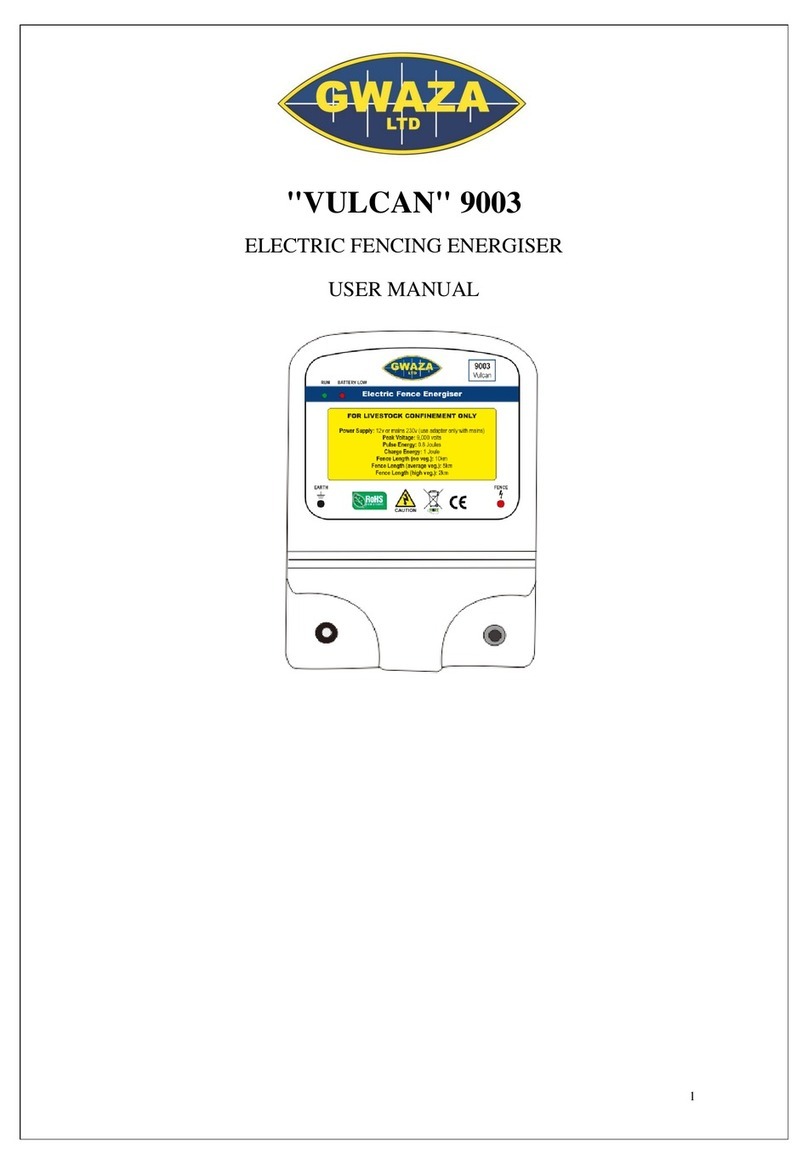
GWAZA
GWAZA VULCAN 9003 user manual
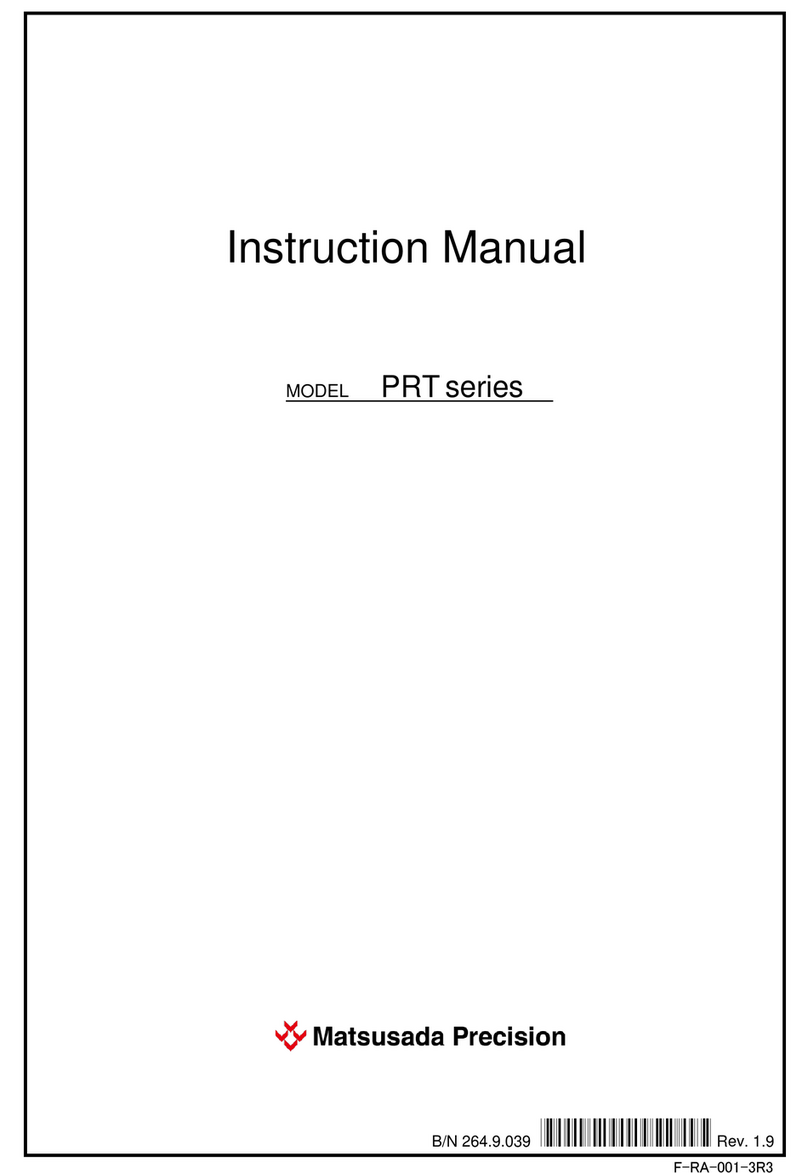
Matsusada Precision
Matsusada Precision PRT Series instruction manual
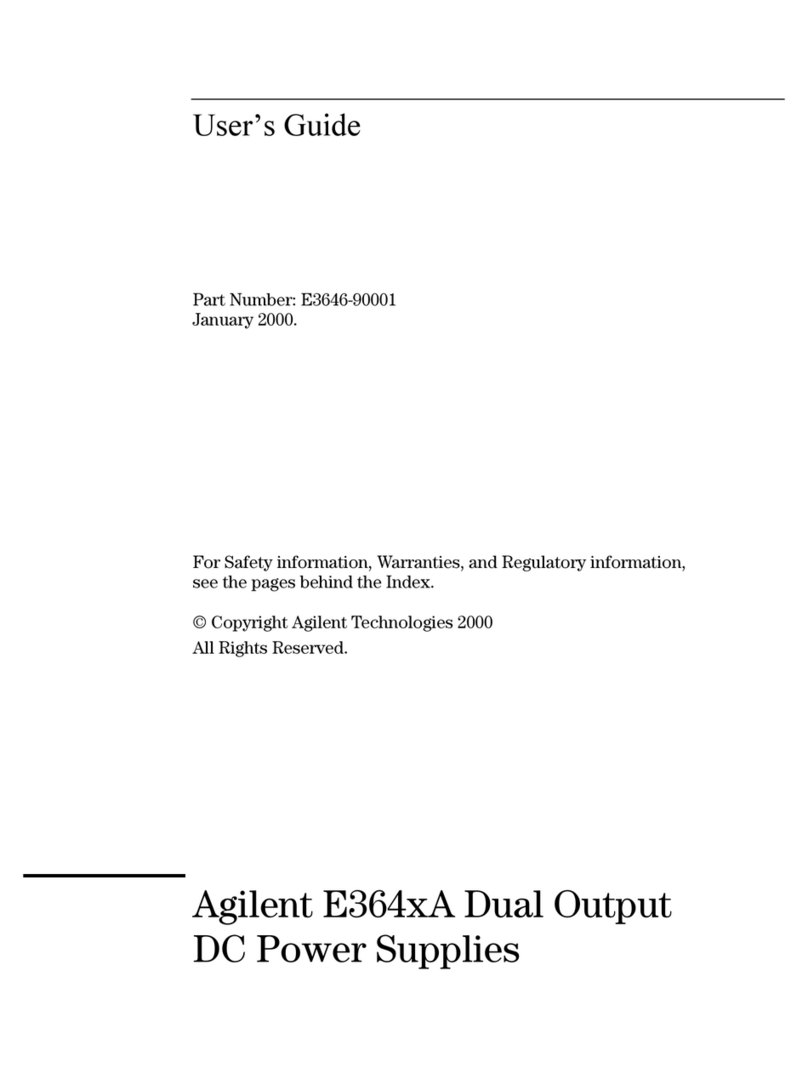
Agilent Technologies
Agilent Technologies E364XA Series user manual

ELC
ELC AL 912AE instruction manual

OCI
OCI BDL800IR instruction manual
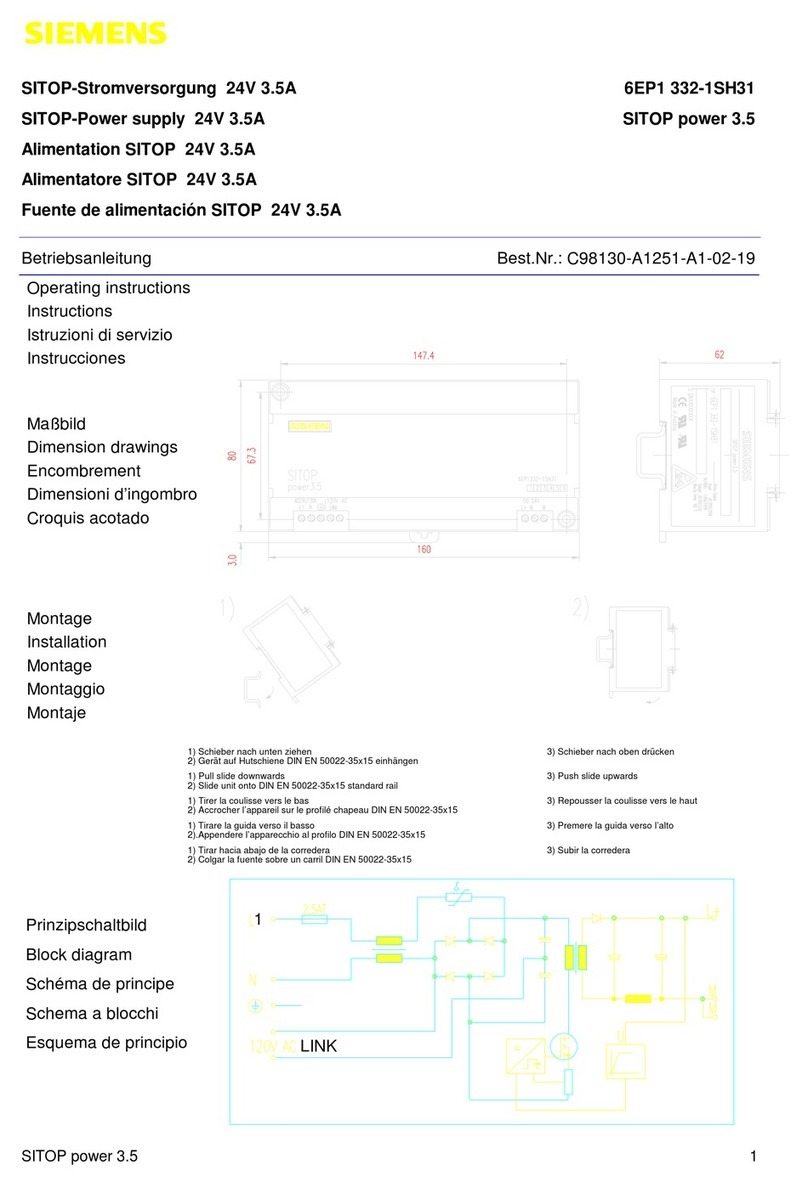
Siemens
Siemens SITOP C98130-A1251-A1-02-19 operating instructions
